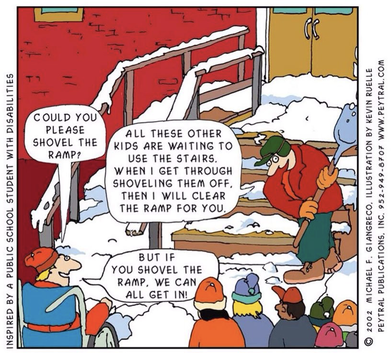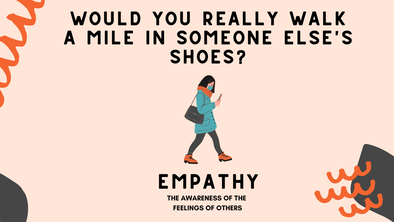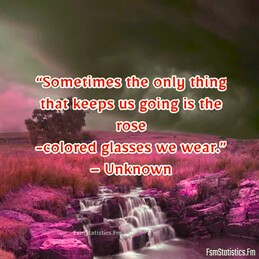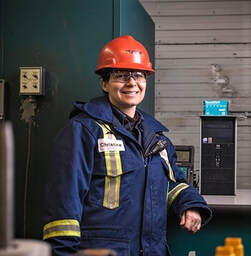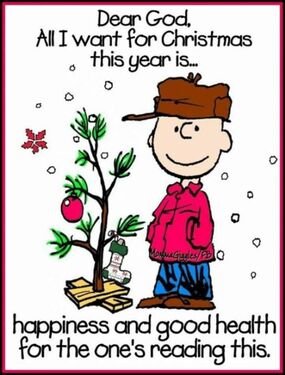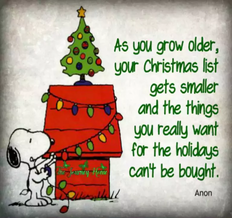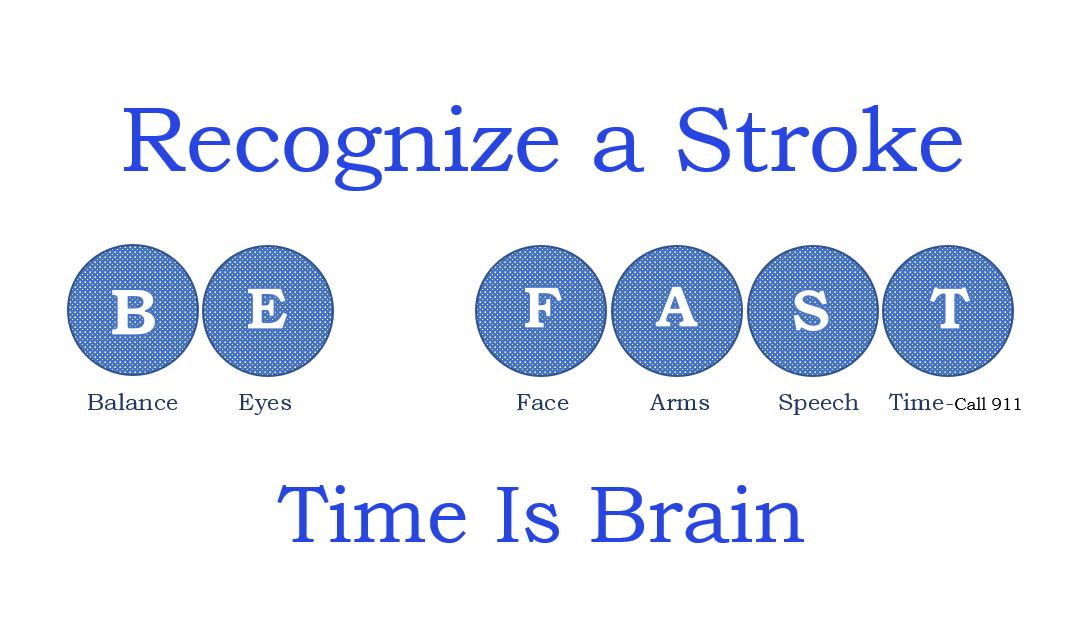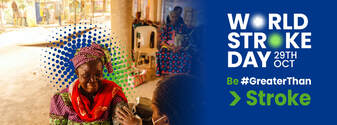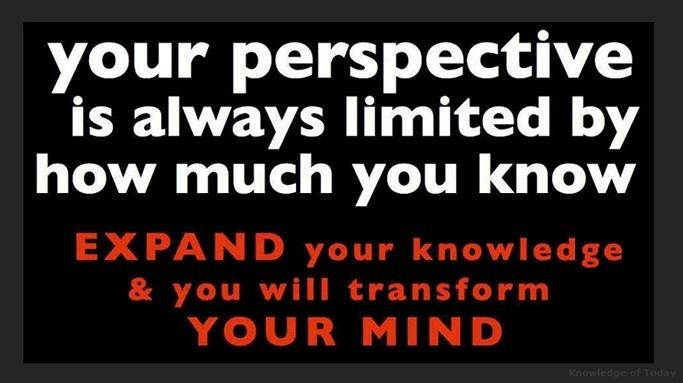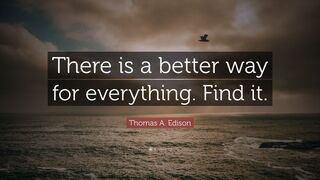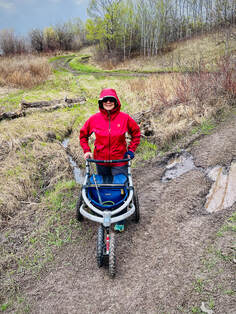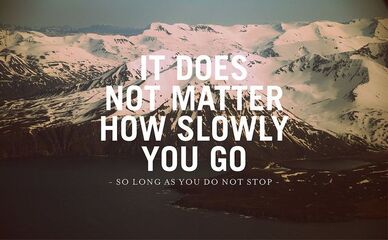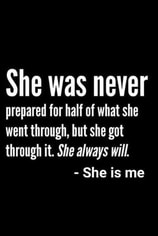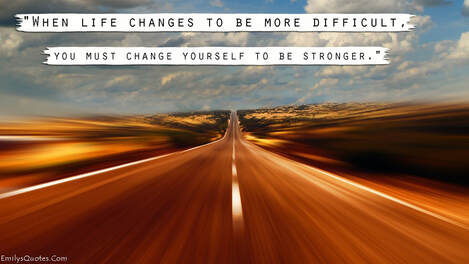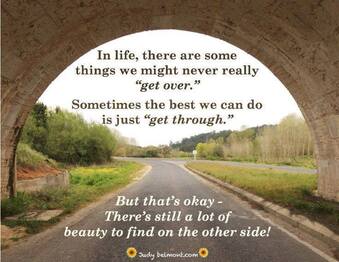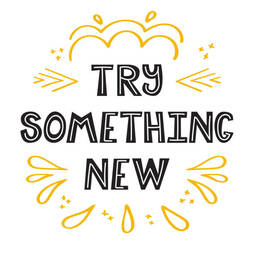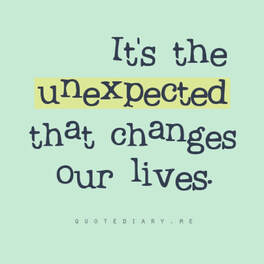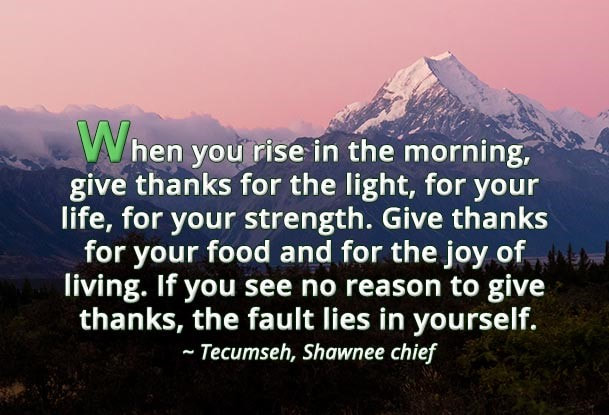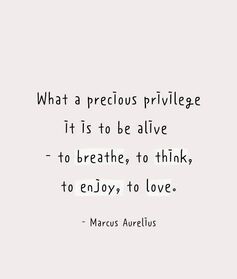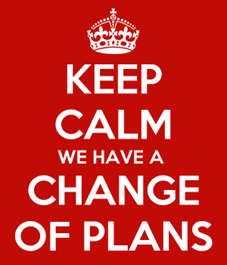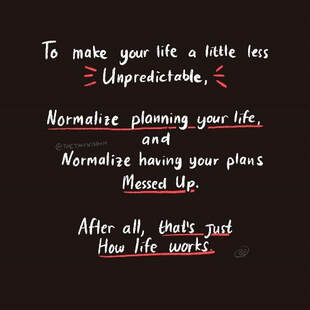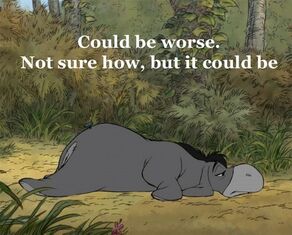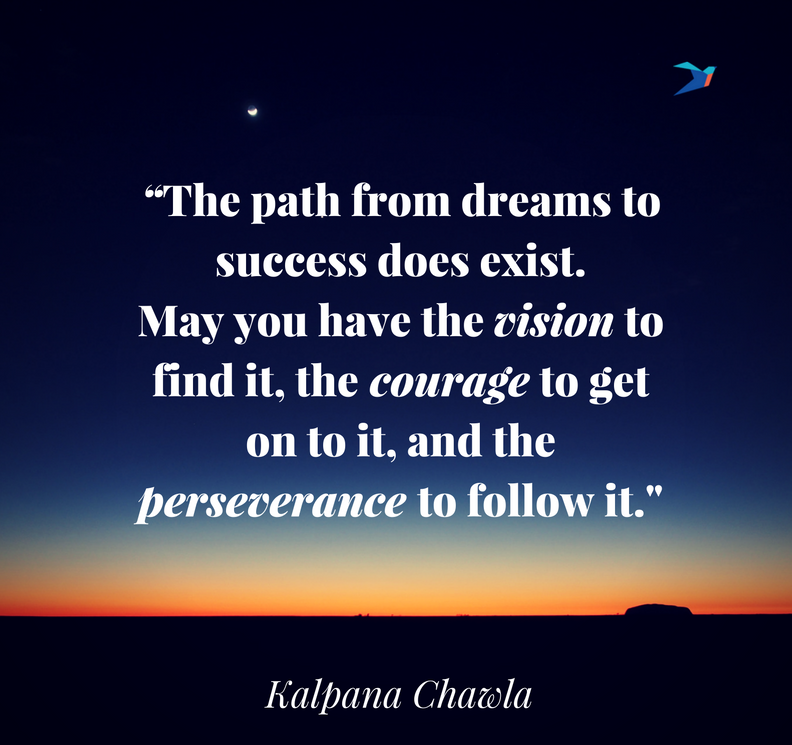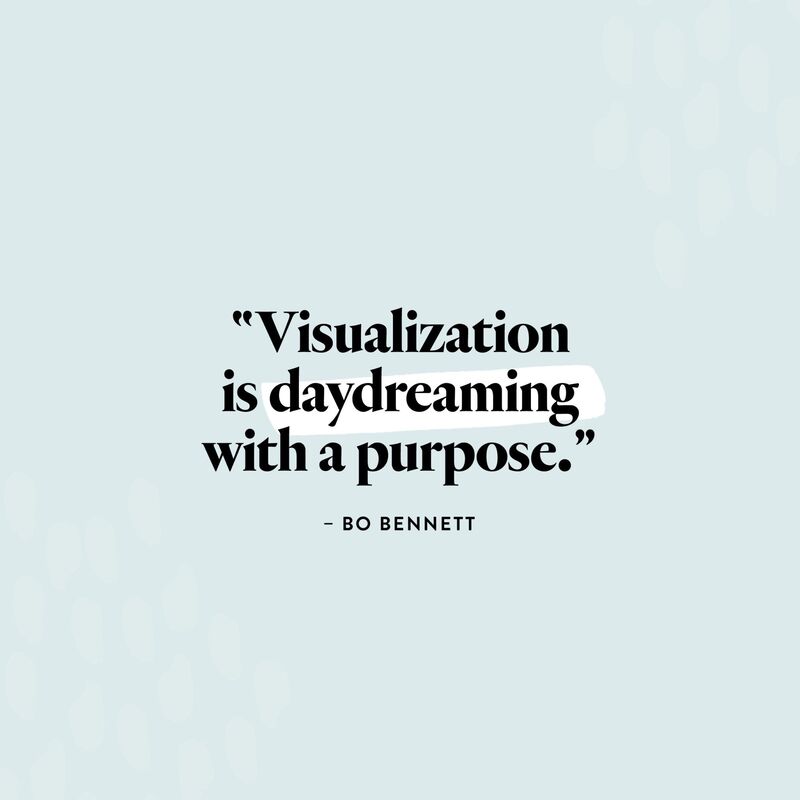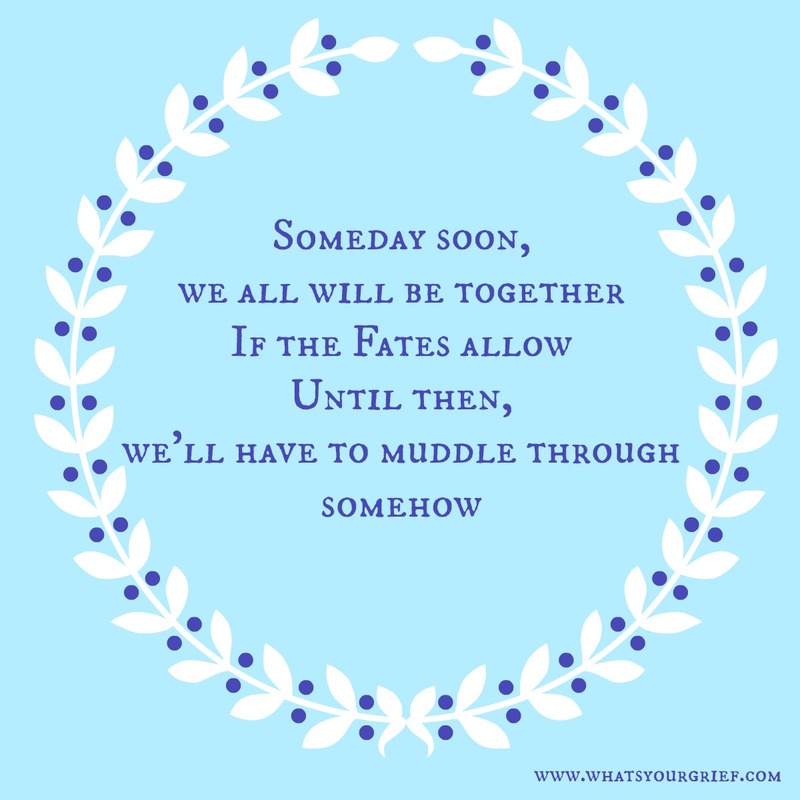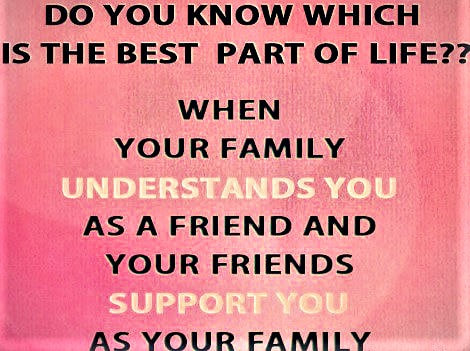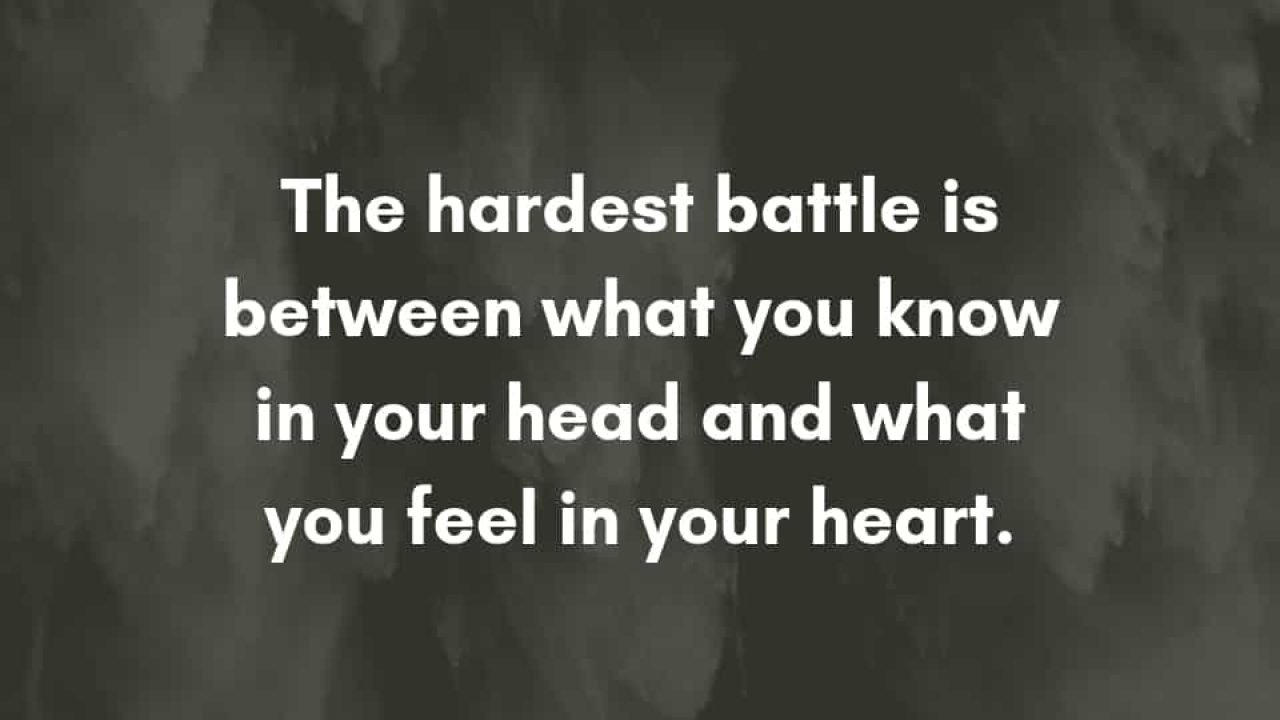Frustration? Hey, You're Learning! July 2024

The path of learning usually involves frustration, it’s a process. I recall a past teacher telling my class, if you’re feeling frustrated it means you’re learning! There may be many points in your learning curve where you just want to give up. I know I’ve experienced it. Despite clenched hands, red face, the frustration of learning starts to turn to mild irritation to cautious optimism and eventually, “Hey I got it!”
It comes down to several things including practice, patience, resolve to keep going, breaking things down and being kind to yourself; oh, and did I mention practice? All this practice also needs to be mediated with rest and recognizing when you need one. Like the adage (and if you know me, you know how I love all those old sayings) “Rome wasn’t built in a day!” Don’t expect to become an expert right away. It may take many, many tries and practices.
Life and time have provided me with lots of opportunities for learning. With my brain injury, I’ve also had to relearn many things and the way I learn has changed. I find I get irritated more easily, and not just when learning. With my professor’s words in my ears, I try to embrace the frustration and keep going. I have a twofold way that helps me manage. One is to realize I won’t be perfect the first time, maybe not even the twentieth time, but I know I will improve, even a tiny bit, every practice. The other is to break the skill I’m learning into small chunks.
An example I can share is when I’m learning a new song on my bass. First, I listen to the song, several times. Then I find the correct notes. Next, I play along to the song, usually on YouTube. I tell myself, and I must consciously think about it, “This is only the beginning, it will be terrible, but next time it will be a little better.” Our keyboard player likes to say, “The first time is a train wreck!” I also praise myself for any little victory I experience, even just realizing where the notes are on my bass.
Second, breaking it down. Most songs have small parts that are iconic and usually more challenging. I focus on any difficult riffs, playing them on my own several times, before I play the whole song. I’ve also discovered you can slow the speed of a song down on YouTube. It is much easier to keep up with the changing notes at half speed. It really helps me along, although some songs sound really bad at half speed! Thank goodness it is only temporary.
In retrospect, I guess my process is actually threefold because the last important piece is knowing when you need to take a break. This is especially important for me since my brain injury. When my brain is full up and has had enough, not only am I not learning anymore but some of my basic skills, like walking, suffer. Fatigue is an ongoing challenge and I think many brain injury survivors would agree.
I know myself, and if I don’t think about the last part I will keep trying until I get it perfect. If I push too hard, my brain tells me, “Nope, enough is enough!” and, as I mentioned, starts to make everything challenging. When I reach that point it’s beyond the frustration of learning. I’ve realized, through trying to learn new things, that taking a break is as fundamental to learning as practicing. It’s finding the harmony between all three that makes for success when trying to learn something.
I try to apply this whenever I need, or want, to learn something. Learning encourages growth and change, which keeps us open to new opportunities. Learning is a lifelong journey! And it’s so good for our brains, growing new synapses, something I need; something I think we all need. Just as important is being kind to yourself during your learning journey. We are all on a different course when it comes to learning and we have to go at a speed that works for us.
Yes, frustration is a normal part and even lets you know you are on the right path. But hidden within every skill being learned is the wisdom of knowing how you learn best.
It comes down to several things including practice, patience, resolve to keep going, breaking things down and being kind to yourself; oh, and did I mention practice? All this practice also needs to be mediated with rest and recognizing when you need one. Like the adage (and if you know me, you know how I love all those old sayings) “Rome wasn’t built in a day!” Don’t expect to become an expert right away. It may take many, many tries and practices.
Life and time have provided me with lots of opportunities for learning. With my brain injury, I’ve also had to relearn many things and the way I learn has changed. I find I get irritated more easily, and not just when learning. With my professor’s words in my ears, I try to embrace the frustration and keep going. I have a twofold way that helps me manage. One is to realize I won’t be perfect the first time, maybe not even the twentieth time, but I know I will improve, even a tiny bit, every practice. The other is to break the skill I’m learning into small chunks.
An example I can share is when I’m learning a new song on my bass. First, I listen to the song, several times. Then I find the correct notes. Next, I play along to the song, usually on YouTube. I tell myself, and I must consciously think about it, “This is only the beginning, it will be terrible, but next time it will be a little better.” Our keyboard player likes to say, “The first time is a train wreck!” I also praise myself for any little victory I experience, even just realizing where the notes are on my bass.
Second, breaking it down. Most songs have small parts that are iconic and usually more challenging. I focus on any difficult riffs, playing them on my own several times, before I play the whole song. I’ve also discovered you can slow the speed of a song down on YouTube. It is much easier to keep up with the changing notes at half speed. It really helps me along, although some songs sound really bad at half speed! Thank goodness it is only temporary.
In retrospect, I guess my process is actually threefold because the last important piece is knowing when you need to take a break. This is especially important for me since my brain injury. When my brain is full up and has had enough, not only am I not learning anymore but some of my basic skills, like walking, suffer. Fatigue is an ongoing challenge and I think many brain injury survivors would agree.
I know myself, and if I don’t think about the last part I will keep trying until I get it perfect. If I push too hard, my brain tells me, “Nope, enough is enough!” and, as I mentioned, starts to make everything challenging. When I reach that point it’s beyond the frustration of learning. I’ve realized, through trying to learn new things, that taking a break is as fundamental to learning as practicing. It’s finding the harmony between all three that makes for success when trying to learn something.
I try to apply this whenever I need, or want, to learn something. Learning encourages growth and change, which keeps us open to new opportunities. Learning is a lifelong journey! And it’s so good for our brains, growing new synapses, something I need; something I think we all need. Just as important is being kind to yourself during your learning journey. We are all on a different course when it comes to learning and we have to go at a speed that works for us.
Yes, frustration is a normal part and even lets you know you are on the right path. But hidden within every skill being learned is the wisdom of knowing how you learn best.
Finding My Reflection May 2024

I was recently at a social gathering and having a great conversation with a friend. This friend was aware of my roller coaster ride of surviving 3 hemorrhagic strokes and brain surgery. Suddenly he asked me, “What was it like, not being able to walk?”
That stopped me for a moment. How do you describe, to someone else, losing the ability to walk Something most of us have been able to do for most of our lives.
Initially I described my mindset. I told him that I never even considered the possibility that I wouldn’t walk again. I had so much conviction in the belief that I would walk again, I never really stopped to consider that I couldn’t. That kept me going, motivated me and pushed me in the direction I needed to go to be successful in relearning the skill I had known since I was a toddler.
Later, I gave the question some time and really thought about it. What was it like, not knowing how to walk anymore? From that first time, just before they transferred me from ICU to the neurosurgery ward, and discovered I couldn’t walk, the idea of not being able to walk was a real quandary that left me feeling confused and disorientated.
I knew what walking was, knew what my body should be doing, could even visualize the physical act of walking, but when I tried to put that knowledge into action there was such a disconnect from my brain to my legs. My brain knew what walking was but could not relay that information to my limbs to create the necessary movements needed. The disjointed anomaly between brain and body was so fragmented that it is difficult to explain the experience.
Let’s say one morning you get up and every time you try to look into a mirror, instead of your smiling face looking back, it’s a blank space. You can’t see your image anywhere. You know your reflection should be where a mirror is and even though you remember what you look like it’s distressing that your image is not reflected back. The mirror is empty, nothing, void of anything.
You can remember what you look like, your hair colour, eyes, even your smile, but you can’t see yourself, no matter how hard you look for your reflection. That is kind of what it was like. I knew what walking was but no matter how hard I tried; I couldn’t make the necessary movements. During therapy, every time I tried the exercises to relearn how to walk, I was greeted with this blank space.
I knew I wanted to walk again, but it was just like looking at the absent reflection. You want to see your face again. It’s important, so every day you look at that blank space trying to get your image to reappear. You try and try again. Slowly, little bits start becoming visible, reassembling. At first blurry, crooked but then - a piece of your ear, a bit of hair, one eye, and so on.
You keep on working at it and eventually you can see your reflection again. It’s not the same as you remember but at least there is a semblance of your smiling face. Even though it’s changed and somewhat different it’s better than that blank space. Now that it’s returned you realize how precious it is and you treasure your image. You need to take care of it because if you overdo it or push yourself too far the blank space starts taking parts of your reflection again.
That’s my best attempt at an analogy of what it’s like to not be able to walk. I worked at relearning how to walk, every day, until eventually the blank space started filling in with bits of new neural connections. Soon the space was filled with enough parts that my brain and body started working together again to engage in and complete the action of walking.
It’s changed, somewhat different and I use a walker, but it’s sure better than the blank space. I am so grateful that I’m able to walk at all. I value the skill and take care of it. I know what’s it’s like to lose my reflection and I cherish having found it again.
That stopped me for a moment. How do you describe, to someone else, losing the ability to walk Something most of us have been able to do for most of our lives.
Initially I described my mindset. I told him that I never even considered the possibility that I wouldn’t walk again. I had so much conviction in the belief that I would walk again, I never really stopped to consider that I couldn’t. That kept me going, motivated me and pushed me in the direction I needed to go to be successful in relearning the skill I had known since I was a toddler.
Later, I gave the question some time and really thought about it. What was it like, not knowing how to walk anymore? From that first time, just before they transferred me from ICU to the neurosurgery ward, and discovered I couldn’t walk, the idea of not being able to walk was a real quandary that left me feeling confused and disorientated.
I knew what walking was, knew what my body should be doing, could even visualize the physical act of walking, but when I tried to put that knowledge into action there was such a disconnect from my brain to my legs. My brain knew what walking was but could not relay that information to my limbs to create the necessary movements needed. The disjointed anomaly between brain and body was so fragmented that it is difficult to explain the experience.
Let’s say one morning you get up and every time you try to look into a mirror, instead of your smiling face looking back, it’s a blank space. You can’t see your image anywhere. You know your reflection should be where a mirror is and even though you remember what you look like it’s distressing that your image is not reflected back. The mirror is empty, nothing, void of anything.
You can remember what you look like, your hair colour, eyes, even your smile, but you can’t see yourself, no matter how hard you look for your reflection. That is kind of what it was like. I knew what walking was but no matter how hard I tried; I couldn’t make the necessary movements. During therapy, every time I tried the exercises to relearn how to walk, I was greeted with this blank space.
I knew I wanted to walk again, but it was just like looking at the absent reflection. You want to see your face again. It’s important, so every day you look at that blank space trying to get your image to reappear. You try and try again. Slowly, little bits start becoming visible, reassembling. At first blurry, crooked but then - a piece of your ear, a bit of hair, one eye, and so on.
You keep on working at it and eventually you can see your reflection again. It’s not the same as you remember but at least there is a semblance of your smiling face. Even though it’s changed and somewhat different it’s better than that blank space. Now that it’s returned you realize how precious it is and you treasure your image. You need to take care of it because if you overdo it or push yourself too far the blank space starts taking parts of your reflection again.
That’s my best attempt at an analogy of what it’s like to not be able to walk. I worked at relearning how to walk, every day, until eventually the blank space started filling in with bits of new neural connections. Soon the space was filled with enough parts that my brain and body started working together again to engage in and complete the action of walking.
It’s changed, somewhat different and I use a walker, but it’s sure better than the blank space. I am so grateful that I’m able to walk at all. I value the skill and take care of it. I know what’s it’s like to lose my reflection and I cherish having found it again.
Walk a Mile... March 2024
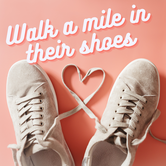
Winter days; filled with snow, cold temperatures, icy winds, and brilliant blue skies. I love winter but not in March! Why couldn’t we have had these beautiful, crisp white days in December, January; even as early as November would have been okay. But March???
Like so many things, we are not in control of the weather only in how we respond. I decided to be grateful for all the unseasonably warm days we had in the previous, usual winter months. I am thankful for all the days I could still walk Arthur (my pup) on the back trails because our snow was minimal, and my all-terrain walker easily managed the small bumps and icy patches.
Winter comes with many inherent challenges, and for someone with mobility concerns, winter can exacerbate them. The last several weeks have brought snow, extreme cold warnings, and more snow. On days when it has warmed enough for me to take Arthur out, I find myself frustrated by the lack of thought by some, namely our city employees, in their snow removal.
We are fortunate to have beautiful, paved trails near our home and the city takes pretty good care of them. They clear the snow, apply gravel when it’s icy, brush it off in the spring and empty the strategically placed garbage cans. They even have several places where you can grab a dog poop bag, if you have forgotten to bring your own. But…
They don’t think about how someone with mobility issues might get onto the trail. Once I cross the road to get to the trail, I need to navigate the snow piled up on the sides of the trail. They don’t think of clearing a spot from the road onto the trail, leaving everyone trying to traverse the snowy, icy ridges. Even with my big tires and extra climbing wheel, my walker often gets stuck in these immense snow mounds. And there is no way around.
I am tenacious (or stubborn, depends on who you ask) and I literally push through. Arthur often helps by pulling ahead on his leash, until I finally reach the cleared path. It is cumbersome and difficult and there have been times I take a different route because it is just too hard.
I know I am not the only one who has troubles with the snow. As I let my frustration take up space in my thoughts it expanded into something more. I really don't believe the city employees are trying to be mean. They just didn't think about it. Until we experience something ourselves, it is hard to really understand it. This is where empathy comes in.
Empathy is the ability to put yourself in someone else’s position, to feel what they might be feeling. It is a powerful tool in trying to understand what others might be enduring. It can be truly difficult to understand something until it touches us personally. And it can be easy to judge without that direct experience. For me, stroke was just something I taught in First Aid classes. I thought I knew it, understood it, but my actual knowledge of what it is like to have a stroke and live with the life altering effects was completely foreign.
The same goes for many of us. We all have some type of life experiences that are unique to us. Also true, there are things we know almost nothing about. The goal is to help others understand and hopefully create empathy for everyone. We need to promote an environment where we can start to have some idea of what it’s like in someone else’s shoes.
Often, the chance to improve or change something so more people can be included isn’t very difficult. There’s a saying that a caring builder wanted to make different sized steps so people of variable heights could step up to watch the baseball game over the fence surrounding the field. A wise builder suggested that the fence just be removed so everybody could watch! Let’s look for ways to include everyone and consider why sometimes things need to be modified. We’re not all the same – thank goodness!
And… warmer weather is in the forecast, I daresay, maybe even spring????
Like so many things, we are not in control of the weather only in how we respond. I decided to be grateful for all the unseasonably warm days we had in the previous, usual winter months. I am thankful for all the days I could still walk Arthur (my pup) on the back trails because our snow was minimal, and my all-terrain walker easily managed the small bumps and icy patches.
Winter comes with many inherent challenges, and for someone with mobility concerns, winter can exacerbate them. The last several weeks have brought snow, extreme cold warnings, and more snow. On days when it has warmed enough for me to take Arthur out, I find myself frustrated by the lack of thought by some, namely our city employees, in their snow removal.
We are fortunate to have beautiful, paved trails near our home and the city takes pretty good care of them. They clear the snow, apply gravel when it’s icy, brush it off in the spring and empty the strategically placed garbage cans. They even have several places where you can grab a dog poop bag, if you have forgotten to bring your own. But…
They don’t think about how someone with mobility issues might get onto the trail. Once I cross the road to get to the trail, I need to navigate the snow piled up on the sides of the trail. They don’t think of clearing a spot from the road onto the trail, leaving everyone trying to traverse the snowy, icy ridges. Even with my big tires and extra climbing wheel, my walker often gets stuck in these immense snow mounds. And there is no way around.
I am tenacious (or stubborn, depends on who you ask) and I literally push through. Arthur often helps by pulling ahead on his leash, until I finally reach the cleared path. It is cumbersome and difficult and there have been times I take a different route because it is just too hard.
I know I am not the only one who has troubles with the snow. As I let my frustration take up space in my thoughts it expanded into something more. I really don't believe the city employees are trying to be mean. They just didn't think about it. Until we experience something ourselves, it is hard to really understand it. This is where empathy comes in.
Empathy is the ability to put yourself in someone else’s position, to feel what they might be feeling. It is a powerful tool in trying to understand what others might be enduring. It can be truly difficult to understand something until it touches us personally. And it can be easy to judge without that direct experience. For me, stroke was just something I taught in First Aid classes. I thought I knew it, understood it, but my actual knowledge of what it is like to have a stroke and live with the life altering effects was completely foreign.
The same goes for many of us. We all have some type of life experiences that are unique to us. Also true, there are things we know almost nothing about. The goal is to help others understand and hopefully create empathy for everyone. We need to promote an environment where we can start to have some idea of what it’s like in someone else’s shoes.
Often, the chance to improve or change something so more people can be included isn’t very difficult. There’s a saying that a caring builder wanted to make different sized steps so people of variable heights could step up to watch the baseball game over the fence surrounding the field. A wise builder suggested that the fence just be removed so everybody could watch! Let’s look for ways to include everyone and consider why sometimes things need to be modified. We’re not all the same – thank goodness!
And… warmer weather is in the forecast, I daresay, maybe even spring????
Rose Coloured Glasses February 2024
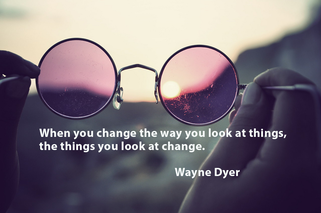
Ahhh, to see the world through rose-coloured glasses. A classic idiom that dates back to the 1800’s. Figuratively, seeing the world through rose-coloured glasses refers to being optimistic, cheery and hopeful.
One theory suggests it was initially coined by cartographers who used to clean their eye glass lenses with rose petals. What a lovely thought, and the map makers were looking at their drawings of the world through these literal rose tinted glasses.
There is no single agreed upon history, but most denote a positive outlook. I have used this expression many times. Since my stroke I often use it when I talk about my lost career. My career was a big part of my identity and when I recall my job there, I tend to only remember the good parts.
There were certainly many challenging parts in my job but missing my career along with knowing I could not return to it smoothed away any friction causing edges leaving only the well polished, rosy memories.
I do not think I am alone in seeing the past through rose-coloured glasses. Many of us are eager to forget the difficult parts of any memory. Rose-coloured glasses certainly help with that. But then I got to thinking; mmmh. Why look at only the past through floral lenses.
Now, I try to use the lexis for everyday life and for the future. If I can erase or soften negative moments of days gone by, think of what I can do for events that are still to come. Putting on those rose-coloured glasses isn’t just ignoring imperfections; it’s looking for possibilities.
When I think about my future a rosy perspective helps me to see the true beauty that is my life. I’m not denying reality, I know there will be some tough times, but I’m choosing to focus on the positive. Life is what we make it and even the darkest days become more manageable if we try to see it through rose-coloured lenses.
As with most everything in life, seeing the world with an optimistic perspective is a choice. Adopt the idea of rose-coloured glasses and see your life improve. As I’ve said before, what we see depends on how we look. Looking through the figurative rosy spectacles opens our hearts to all the beautiful prospects and fills our days with light.
Not only am I remembering a past filled with good times, but I am looking towards my future with glasses that have been polished with beautiful rose petals!
One theory suggests it was initially coined by cartographers who used to clean their eye glass lenses with rose petals. What a lovely thought, and the map makers were looking at their drawings of the world through these literal rose tinted glasses.
There is no single agreed upon history, but most denote a positive outlook. I have used this expression many times. Since my stroke I often use it when I talk about my lost career. My career was a big part of my identity and when I recall my job there, I tend to only remember the good parts.
There were certainly many challenging parts in my job but missing my career along with knowing I could not return to it smoothed away any friction causing edges leaving only the well polished, rosy memories.
I do not think I am alone in seeing the past through rose-coloured glasses. Many of us are eager to forget the difficult parts of any memory. Rose-coloured glasses certainly help with that. But then I got to thinking; mmmh. Why look at only the past through floral lenses.
Now, I try to use the lexis for everyday life and for the future. If I can erase or soften negative moments of days gone by, think of what I can do for events that are still to come. Putting on those rose-coloured glasses isn’t just ignoring imperfections; it’s looking for possibilities.
When I think about my future a rosy perspective helps me to see the true beauty that is my life. I’m not denying reality, I know there will be some tough times, but I’m choosing to focus on the positive. Life is what we make it and even the darkest days become more manageable if we try to see it through rose-coloured lenses.
As with most everything in life, seeing the world with an optimistic perspective is a choice. Adopt the idea of rose-coloured glasses and see your life improve. As I’ve said before, what we see depends on how we look. Looking through the figurative rosy spectacles opens our hearts to all the beautiful prospects and fills our days with light.
Not only am I remembering a past filled with good times, but I am looking towards my future with glasses that have been polished with beautiful rose petals!
Oh Christmas Tree December 2023
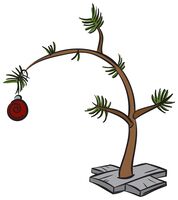
Oh, Christmas Tree! Oh, Christmas Tree!
Ahh, the beautiful Christmas tree. Is there anything else that says Christmas more than a Christmas tree, decorated and brightly lit, standing proudly in the family room, with presents lovingly placed around its noble boughs.
We used to live in the mountains, surrounded by hundreds of miles of forest. The next closest town was 142 kilometers away. Back then you could buy a permit for $5.00 and cut down up to 4 trees anywhere along cutline's or correction lines. We’d pack up a thermos full of hot chocolate, some rope and a saw, bundle into our winter gear and head out.
It was great fun. There was lots of snow and the hunt for the perfect tree was exciting. If you’ve ever seen trees growing naturally in the forest, instead of tree farms, there is quite a difference. A tree from a distance looks full and even, decorated with snow and filled out by other trees growing close to it. Once you pick your perfect tree, cut it down, shake off the snow and pull it away from the others – you discover you have an almost exact replica of a Charlie Brown Christmas Tree.
We loved our sparse Christmas trees. We loaded up the branches with decorations, old, new, and homemade. We sang carols around the tree and took annual family photos. The tree was witness to yet another year of Christmas fun and was welcomed as part of the family for a few weeks.
But…Life is change.
One of our children developed bad allergies to evergreen trees. That was the end of Christmas tree hunting. We bought an artificial one. Shortly thereafter we moved away from the mountains so our annual hunt would have been more difficult anyway. We made the best out of it and had hot chocolate while decorating the tree, marveling at how full this new, artificial tree was and how we could put ornaments on it without the branches sagging.
Change can have many sides and there is always a positive one if you know where to look. We embraced the change in our yearly tradition and in some ways found it improved. I had always felt a little guilty cutting down a healthy young tree anyway. Twenty-two years later we’re still using the same artificial tree. A few of the branches now have wire to reattach them to the trunk but I can rest easy knowing twenty-two trees were saved from being cut down.
It’s like the famous quote from Charlie Brown, owner of the iconic dismal Christmas tree. “It’s not what’s under the Christmas tree that matters, it’s who’s around it.” I’d like to take that quote one step further to say, it doesn’t matter what your tree looks like either. What really matters is not the size, beauty, or ornaments of your tree but it’s about the feelings. It’s about having people around you who make you feel loved, special, warm, and cozy, just like those cups of hot chocolate.
Celebrate the season in whatever way fills your soul. Find the people in your life who are like cups of hot chocolate and hold them close. And whatever your tree looks like, or maybe you don’t even have one, that’s okay. It’s not about the tree. As Linus from A Charlie Brown Christmas says, “…maybe it just needs a little love.” That’s something we all can use.
No matter how you celebrate I wish you a season filled with cozy cups of hot chocolate.
Ahh, the beautiful Christmas tree. Is there anything else that says Christmas more than a Christmas tree, decorated and brightly lit, standing proudly in the family room, with presents lovingly placed around its noble boughs.
We used to live in the mountains, surrounded by hundreds of miles of forest. The next closest town was 142 kilometers away. Back then you could buy a permit for $5.00 and cut down up to 4 trees anywhere along cutline's or correction lines. We’d pack up a thermos full of hot chocolate, some rope and a saw, bundle into our winter gear and head out.
It was great fun. There was lots of snow and the hunt for the perfect tree was exciting. If you’ve ever seen trees growing naturally in the forest, instead of tree farms, there is quite a difference. A tree from a distance looks full and even, decorated with snow and filled out by other trees growing close to it. Once you pick your perfect tree, cut it down, shake off the snow and pull it away from the others – you discover you have an almost exact replica of a Charlie Brown Christmas Tree.
We loved our sparse Christmas trees. We loaded up the branches with decorations, old, new, and homemade. We sang carols around the tree and took annual family photos. The tree was witness to yet another year of Christmas fun and was welcomed as part of the family for a few weeks.
But…Life is change.
One of our children developed bad allergies to evergreen trees. That was the end of Christmas tree hunting. We bought an artificial one. Shortly thereafter we moved away from the mountains so our annual hunt would have been more difficult anyway. We made the best out of it and had hot chocolate while decorating the tree, marveling at how full this new, artificial tree was and how we could put ornaments on it without the branches sagging.
Change can have many sides and there is always a positive one if you know where to look. We embraced the change in our yearly tradition and in some ways found it improved. I had always felt a little guilty cutting down a healthy young tree anyway. Twenty-two years later we’re still using the same artificial tree. A few of the branches now have wire to reattach them to the trunk but I can rest easy knowing twenty-two trees were saved from being cut down.
It’s like the famous quote from Charlie Brown, owner of the iconic dismal Christmas tree. “It’s not what’s under the Christmas tree that matters, it’s who’s around it.” I’d like to take that quote one step further to say, it doesn’t matter what your tree looks like either. What really matters is not the size, beauty, or ornaments of your tree but it’s about the feelings. It’s about having people around you who make you feel loved, special, warm, and cozy, just like those cups of hot chocolate.
Celebrate the season in whatever way fills your soul. Find the people in your life who are like cups of hot chocolate and hold them close. And whatever your tree looks like, or maybe you don’t even have one, that’s okay. It’s not about the tree. As Linus from A Charlie Brown Christmas says, “…maybe it just needs a little love.” That’s something we all can use.
No matter how you celebrate I wish you a season filled with cozy cups of hot chocolate.
World Stroke Day October 2023
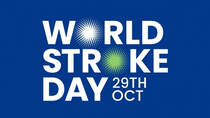
It’s October 29, 2023. Just another day? Noooo!!!
It’s World Stroke Day. A day that has become very important to me since I became a stroke survivor. It’s like many things in life, until we have some type of direct experience it can be very hard to truly understand what it’s all about. I have much more lived experience with stroke than I could have ever imagined.
World Stroke Day was first founded in 2004 at the World Stroke Congress in our own Vancouver, BC. Everyone gathered there were dedicated to all aspects of stroke and some merged together to form the World Stroke Organization (WSO) who now manages World Stroke Day. Their goal is to bring awareness, information, initiatives, research, and support to the life altering medical emergency called stroke.
Every year they have a new campaign and this year its “Together we are Greater Than Stroke.” The focus is on awareness of things people can do to lessen the risk of having a stroke. New research says one in four of us will have a stroke in our lifetime. It also states that 90% of strokes could be prevented by managing risk factors including high blood pressure, an irregular heartbeat, smoking, diet, and exercise. These numbers are astounding.
The emphasis is on ischemic strokes, or a blockage in the blood supply to the brain. Approximately 87% of all strokes are ischemic and many may be prevented through managing risk factors. Lifestyle choices play an important role in our health. Even though I had almost none of the risk factors, I still had a stroke. Mine was a hemorrhagic stroke, a less common type, but that didn’t stop stroke from striking me.
I’ve said this many times before and I’ll say it again – Stroke can Strike Anyone, Anytime, Any Age!
Knowledge is power and the more we know the more we might be able to reduce the chance of having a stroke ourselves (remember one in four of us will have a stroke) or being able to help someone who has been affected by a stroke. Stroke is so much more than a page in a book. This is how I used to think of stroke when I was a First Aid instructor. I knew the signs and symptoms, the treatment, etc. but it was just another section I had to teach, until I had one myself.
With prevalence of stroke rapidly increasing it is our responsibility to raise awareness and encourage action towards stroke prevention, not just on October 29, but the whole year through. There are many events being held around the globe in conjunction with the WSO and World Stroke Day emphasizing “Together we are Greater Than Stroke.” I was disappointed to see not one event registered in my own country of Canada, although I know Canada is involved in many other initiatives for stroke awareness.
It’s not much this year but perhaps my Mindful Musing is the start of something for World Stroke Day from me. I’m recovering and getting stronger since my latest stroke and brain surgery and am passionate about spreading information about stroke. Maybe next year I’ll be able to have an event posted on the WSO’s website for having an event dedicated to stroke awareness and prevention on World Stroke Day.
Stay Tuned!
It’s World Stroke Day. A day that has become very important to me since I became a stroke survivor. It’s like many things in life, until we have some type of direct experience it can be very hard to truly understand what it’s all about. I have much more lived experience with stroke than I could have ever imagined.
World Stroke Day was first founded in 2004 at the World Stroke Congress in our own Vancouver, BC. Everyone gathered there were dedicated to all aspects of stroke and some merged together to form the World Stroke Organization (WSO) who now manages World Stroke Day. Their goal is to bring awareness, information, initiatives, research, and support to the life altering medical emergency called stroke.
Every year they have a new campaign and this year its “Together we are Greater Than Stroke.” The focus is on awareness of things people can do to lessen the risk of having a stroke. New research says one in four of us will have a stroke in our lifetime. It also states that 90% of strokes could be prevented by managing risk factors including high blood pressure, an irregular heartbeat, smoking, diet, and exercise. These numbers are astounding.
The emphasis is on ischemic strokes, or a blockage in the blood supply to the brain. Approximately 87% of all strokes are ischemic and many may be prevented through managing risk factors. Lifestyle choices play an important role in our health. Even though I had almost none of the risk factors, I still had a stroke. Mine was a hemorrhagic stroke, a less common type, but that didn’t stop stroke from striking me.
I’ve said this many times before and I’ll say it again – Stroke can Strike Anyone, Anytime, Any Age!
Knowledge is power and the more we know the more we might be able to reduce the chance of having a stroke ourselves (remember one in four of us will have a stroke) or being able to help someone who has been affected by a stroke. Stroke is so much more than a page in a book. This is how I used to think of stroke when I was a First Aid instructor. I knew the signs and symptoms, the treatment, etc. but it was just another section I had to teach, until I had one myself.
With prevalence of stroke rapidly increasing it is our responsibility to raise awareness and encourage action towards stroke prevention, not just on October 29, but the whole year through. There are many events being held around the globe in conjunction with the WSO and World Stroke Day emphasizing “Together we are Greater Than Stroke.” I was disappointed to see not one event registered in my own country of Canada, although I know Canada is involved in many other initiatives for stroke awareness.
It’s not much this year but perhaps my Mindful Musing is the start of something for World Stroke Day from me. I’m recovering and getting stronger since my latest stroke and brain surgery and am passionate about spreading information about stroke. Maybe next year I’ll be able to have an event posted on the WSO’s website for having an event dedicated to stroke awareness and prevention on World Stroke Day.
Stay Tuned!
Go Oiler's April 2023
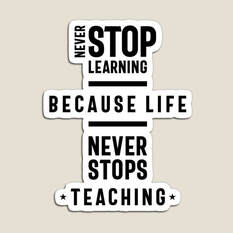
There’s been along stretch between my mindful musings. Not that I haven’t been musing, but I’ve been busy getting out the newest Glia Girl Adventure, “Ouch “, check it out below. It’s been keeping me busy. I guess my brain has been full because usually I get an inspiration for something I’ve contemplated and the words just fall out, almost like they magically appear on the computer screen.
It finally happened and my inspiration was hockey. Yes, hockey. My husband and I have been watching the playoffs. I used to love watching hockey years ago, but I can’t say I’m a faithful hockey fan anymore.
A few things have changed over the years. I used to be a diehard Calgary Flames fan. They won the Stanley Cup two days before I got married. If they hadn’t, the last game would have been during our wedding reception. I’m glad for many reasons they won that night.
Life took over. My husband and I moved up north, we were busy raising our family. Hockey didn’t often cross our minds. Later we moved to central Alberta. We were still busy, with our careers, our family, hockey wasn’t even on the stove, let alone the back burner. Then stroke hit. It slowed me down; it slowed our whole lifestyle down. Instead of racing five different directions after supper we started watching TV. We often watched the news.
Last year, the Edmonton Oiler’s made it to the playoffs. Yay, Go Oiler’s! Wait a minute? How did that happen? When did I become an Oiler’s fan? I guess decades of living in “Oil Country” had a subliminal effect, watching the news, hearing about how “our” team was doing. Suddenly, I was an Oiler’s fan.
My husband and I are enjoying watching the games, right now, between the Edmonton Oiler’s and the LA Kings. I was against hockey while my children were young; too much fighting, overpaid, and on and on. The years recovering from stroke has taught me to look at things in different way now.
Watching the Oiler’s hockey games has inspired a pride in our province again, something that is sorely needed. When I see the people in the stands and the people at the outdoor tailgate parties, I see a camaraderie binding everyone together with a common goal. News channels are interviewing fans and positive comments are espoused, even when the Oiler’s lose a game.
I’m really loving the games this year. It almost brings a tear to my eye, watching the pride of the fans and players as our National Anthem is being sung before the start of a game. Through these games a new patriotism is being infused, slowly erasing the negative connotations invoked by the Freedom Convoys last year. I even had the opportunity to read my newest Glia Girl Adventure, all about concussion, to a youth hockey team and found the group to be full of team spirit, interested in learning about concussion, and supporting each other while learning discipline and sportsmanship.
The Oiler’s themselves are very dedicated to serving their community through many different initiatives. They are involved in supporting fundraising events, they bring joy and fun through many visits to people in the hospitals, and this year they are teaming up with a children’s hospital foundation to raise money to fight childhood cancer. And they play great hockey.
I have changed which team (sorry Calgary) I’m cheering for, and I’ve changed my mind about hockey. It’s a great sport; fast, rough, and exciting to watch. More importantly it is bringing people together, people who have been divided, especially since COVID. The players are using their positions of fame to help others and give back. It is reuniting us as a country. I see a similar camaraderie in other Canadian teams who are also in the playoffs, for now.
In the end, it is just a game but that can be said about anything. It’s more than just a game and if it brings people joy and binds us together while we champion our home team where’s the downside. I really didn’t think I’d become a hockey fan again. When we see the tailgate parties in the Ice District of Edmonton, I feel a longing to join in the fellowship. The noise and the busyness would be too much for my stroke brain, but I appreciate watching the fun from my comfortable, quiet spot on the couch.
It turns out hockey is great example of an important life lesson. You can’t judge a book by its cover, and I shouldn’t have relied on what I saw on the surface about the sport of hockey. I could almost compare it to my stroke and living with an invisible injury. People could look at me and think, “You look fine, why aren’t you doing more?” Any stroke survivor will tell you they have endured similar comments. I’m sure hockey players have encountered a barrage of biases based on what people see on the surface.
This has been a great reminder for me and provided me with my inspiration for this musing. Simply put, let’s not judge. Let’s take the time to learn, ask questions, listen, and understand before we proclaim we know what is going on and pronounce our evaluation of any person, situation, or sport. I never imagined I would be inspired by hockey and even more surprised what it has imparted. Win or lose, I’ll be cheering the team on, Go Oiler’s!
It finally happened and my inspiration was hockey. Yes, hockey. My husband and I have been watching the playoffs. I used to love watching hockey years ago, but I can’t say I’m a faithful hockey fan anymore.
A few things have changed over the years. I used to be a diehard Calgary Flames fan. They won the Stanley Cup two days before I got married. If they hadn’t, the last game would have been during our wedding reception. I’m glad for many reasons they won that night.
Life took over. My husband and I moved up north, we were busy raising our family. Hockey didn’t often cross our minds. Later we moved to central Alberta. We were still busy, with our careers, our family, hockey wasn’t even on the stove, let alone the back burner. Then stroke hit. It slowed me down; it slowed our whole lifestyle down. Instead of racing five different directions after supper we started watching TV. We often watched the news.
Last year, the Edmonton Oiler’s made it to the playoffs. Yay, Go Oiler’s! Wait a minute? How did that happen? When did I become an Oiler’s fan? I guess decades of living in “Oil Country” had a subliminal effect, watching the news, hearing about how “our” team was doing. Suddenly, I was an Oiler’s fan.
My husband and I are enjoying watching the games, right now, between the Edmonton Oiler’s and the LA Kings. I was against hockey while my children were young; too much fighting, overpaid, and on and on. The years recovering from stroke has taught me to look at things in different way now.
Watching the Oiler’s hockey games has inspired a pride in our province again, something that is sorely needed. When I see the people in the stands and the people at the outdoor tailgate parties, I see a camaraderie binding everyone together with a common goal. News channels are interviewing fans and positive comments are espoused, even when the Oiler’s lose a game.
I’m really loving the games this year. It almost brings a tear to my eye, watching the pride of the fans and players as our National Anthem is being sung before the start of a game. Through these games a new patriotism is being infused, slowly erasing the negative connotations invoked by the Freedom Convoys last year. I even had the opportunity to read my newest Glia Girl Adventure, all about concussion, to a youth hockey team and found the group to be full of team spirit, interested in learning about concussion, and supporting each other while learning discipline and sportsmanship.
The Oiler’s themselves are very dedicated to serving their community through many different initiatives. They are involved in supporting fundraising events, they bring joy and fun through many visits to people in the hospitals, and this year they are teaming up with a children’s hospital foundation to raise money to fight childhood cancer. And they play great hockey.
I have changed which team (sorry Calgary) I’m cheering for, and I’ve changed my mind about hockey. It’s a great sport; fast, rough, and exciting to watch. More importantly it is bringing people together, people who have been divided, especially since COVID. The players are using their positions of fame to help others and give back. It is reuniting us as a country. I see a similar camaraderie in other Canadian teams who are also in the playoffs, for now.
In the end, it is just a game but that can be said about anything. It’s more than just a game and if it brings people joy and binds us together while we champion our home team where’s the downside. I really didn’t think I’d become a hockey fan again. When we see the tailgate parties in the Ice District of Edmonton, I feel a longing to join in the fellowship. The noise and the busyness would be too much for my stroke brain, but I appreciate watching the fun from my comfortable, quiet spot on the couch.
It turns out hockey is great example of an important life lesson. You can’t judge a book by its cover, and I shouldn’t have relied on what I saw on the surface about the sport of hockey. I could almost compare it to my stroke and living with an invisible injury. People could look at me and think, “You look fine, why aren’t you doing more?” Any stroke survivor will tell you they have endured similar comments. I’m sure hockey players have encountered a barrage of biases based on what people see on the surface.
This has been a great reminder for me and provided me with my inspiration for this musing. Simply put, let’s not judge. Let’s take the time to learn, ask questions, listen, and understand before we proclaim we know what is going on and pronounce our evaluation of any person, situation, or sport. I never imagined I would be inspired by hockey and even more surprised what it has imparted. Win or lose, I’ll be cheering the team on, Go Oiler’s!
There's Always a Way! February 2023
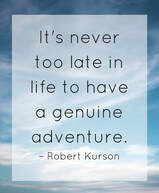
The season is still winter for many areas. Here, in Alberta, Canada, were having a typical winter, filled with snow, ice and freezing temperatures. Before my strokes and brain surgery I, like many Canadians, made the most of the cold season. We would go skiing, skating, snowshoeing, and tobogganing. When my children were small, a favourite would include me laying on a crazy carpet, them piling on top of me and we’d whoosh down the snowy hill. It was great fun.
The only thing constant in life is change. The children have grown up and I cannot participate in the season like before. Last winter I really didn’t venture out, still healing from brain surgery. As my recovery progressed, I finally accepted the fact I needed a walker if I wanted to go out at all. We had borrowed one from an amazing organization called Medi-Lend, at no cost.
The walker let me go out but with its hard little wheels and square design I was limited to smooth, flat, even pathways. I live in rural Alberta and while there are some very nice trails many are not made for regular walkers. Ken, my husband had previously gotten me a used running stroller. With its three-wheel design and air filled tires, it was better but not quite what I needed. I wanted to get out more, especially with our dog, Arthur, whose energy abounded.
I started researching and typed in, all terrain walkers, not having much hope. There is a stereotype that if you need a walker, you only want to go on gentle walks, no more adventures. That’s not true, I still want to go out, have adventures, explore. I’m sure many people with mobility issues feel the same way. Then I found it! A link to a website that boasted all terrain walkers. “The Trionic Veloped – A Modern Alternative to a Rollator!” I clicked into it, a feeling creeping up my spine, telling me this was it. The more I read the more excited I became. The first sentence read – “If you lead an active lifestyle, the Veloped is your ideal choice of a wheeled walker.” It went on to tout its ability to negotiate tough terrain, saying the three-wheel design was more off-road capable than any four wheeled walkers.
Could this really be true? A walker designed for people who still wanted adventures. A walker for exploring and taking the less travelled trail. It had a special extra wheel in front to climb curbs, roots and other obstacles and proclaimed it turned “gravel, grass, snow and off-road trails into pure pleasure instead of a bumpy and unpleasant venture.” They even had a model specific for hunters to “overcome rugged hunting ground.”
This is probably sounding a little like a testimonial and I guess it is. It has changed my life. It is truly the only off-road capable walker. Two obstacles, not on the trail, stood out. They are only made in Sweden, and they are cost prohibitive. I couldn’t get it out of my mind though. I was always a very active, adventurous sort of person and I was sorely missing it. I didn’t want to be constrained to smooth, even paths forever.
There is always a way. Ken found that the company had a distributor in Canada. He contacted them and found out the Veloped was, in fact, a medical mobility aid. He then contacted his insurance company and they said, if it was deemed medically necessary, they would cover a portion of the cost. We went through the process of getting it authorized as a necessity and voilà, we ordered the Veloped.
Surprisingly, it only took three weeks to get here, all the way from Sweden. It changed my life, at least my access to it. We could take the rugged trails at the lake again. I explored the fields behind our house with Arthur. Now, during winter, I can tackle the deep snow that wasn’t cleared, and the snowbanks and ridges left by snowplows. As much as society has improved with access, winter comes with inherent challenges, exacerbated for someone with mobility issues.
There are some things I still just cannot navigate but really, there is so much more I can with my All Terrain Walker! I have so much to be grateful for; I can walk and now with my Veloped I can hike, explore, and have adventures. I am so thankful for this company that had the vision to realize that needing a walker doesn’t mean the end of outdoor adventures.
Following the wise words of Confucius, “Wherever you go, go with all your heart,” I’m following my dream of exploring the outdoors again. It wasn’t easy but anything worthwhile usually isn’t. Life is a journey, as I’ve often said, filled with problems to solve, lessons to learn and moments to treasure. And adventure isn’t just backpacking in the mountains or skydiving; it’s a way of thinking to overcome the obstacles of everyday life, to find an adventure that’s right for you. I’m finding my adventures daily and taking the less travelled trails with my All Terrain Walker and Arthur!
The only thing constant in life is change. The children have grown up and I cannot participate in the season like before. Last winter I really didn’t venture out, still healing from brain surgery. As my recovery progressed, I finally accepted the fact I needed a walker if I wanted to go out at all. We had borrowed one from an amazing organization called Medi-Lend, at no cost.
The walker let me go out but with its hard little wheels and square design I was limited to smooth, flat, even pathways. I live in rural Alberta and while there are some very nice trails many are not made for regular walkers. Ken, my husband had previously gotten me a used running stroller. With its three-wheel design and air filled tires, it was better but not quite what I needed. I wanted to get out more, especially with our dog, Arthur, whose energy abounded.
I started researching and typed in, all terrain walkers, not having much hope. There is a stereotype that if you need a walker, you only want to go on gentle walks, no more adventures. That’s not true, I still want to go out, have adventures, explore. I’m sure many people with mobility issues feel the same way. Then I found it! A link to a website that boasted all terrain walkers. “The Trionic Veloped – A Modern Alternative to a Rollator!” I clicked into it, a feeling creeping up my spine, telling me this was it. The more I read the more excited I became. The first sentence read – “If you lead an active lifestyle, the Veloped is your ideal choice of a wheeled walker.” It went on to tout its ability to negotiate tough terrain, saying the three-wheel design was more off-road capable than any four wheeled walkers.
Could this really be true? A walker designed for people who still wanted adventures. A walker for exploring and taking the less travelled trail. It had a special extra wheel in front to climb curbs, roots and other obstacles and proclaimed it turned “gravel, grass, snow and off-road trails into pure pleasure instead of a bumpy and unpleasant venture.” They even had a model specific for hunters to “overcome rugged hunting ground.”
This is probably sounding a little like a testimonial and I guess it is. It has changed my life. It is truly the only off-road capable walker. Two obstacles, not on the trail, stood out. They are only made in Sweden, and they are cost prohibitive. I couldn’t get it out of my mind though. I was always a very active, adventurous sort of person and I was sorely missing it. I didn’t want to be constrained to smooth, even paths forever.
There is always a way. Ken found that the company had a distributor in Canada. He contacted them and found out the Veloped was, in fact, a medical mobility aid. He then contacted his insurance company and they said, if it was deemed medically necessary, they would cover a portion of the cost. We went through the process of getting it authorized as a necessity and voilà, we ordered the Veloped.
Surprisingly, it only took three weeks to get here, all the way from Sweden. It changed my life, at least my access to it. We could take the rugged trails at the lake again. I explored the fields behind our house with Arthur. Now, during winter, I can tackle the deep snow that wasn’t cleared, and the snowbanks and ridges left by snowplows. As much as society has improved with access, winter comes with inherent challenges, exacerbated for someone with mobility issues.
There are some things I still just cannot navigate but really, there is so much more I can with my All Terrain Walker! I have so much to be grateful for; I can walk and now with my Veloped I can hike, explore, and have adventures. I am so thankful for this company that had the vision to realize that needing a walker doesn’t mean the end of outdoor adventures.
Following the wise words of Confucius, “Wherever you go, go with all your heart,” I’m following my dream of exploring the outdoors again. It wasn’t easy but anything worthwhile usually isn’t. Life is a journey, as I’ve often said, filled with problems to solve, lessons to learn and moments to treasure. And adventure isn’t just backpacking in the mountains or skydiving; it’s a way of thinking to overcome the obstacles of everyday life, to find an adventure that’s right for you. I’m finding my adventures daily and taking the less travelled trails with my All Terrain Walker and Arthur!
|
The photo on the right is me enjoying an adventure with my new Walker
|
Connections December 2022
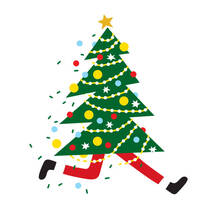
It’s that time of year again. The snow is falling, temperatures are dropping, and decorations are pulled out of boxes to be placed lovingly around the house. It’s Christmas time, still a difficult time for me. Strokes and brain surgery keep me adjusting to my newest normal, but it also affected my entire family. It’s been hard on everyone. Last year, to manage, I didn’t adhere to many of our usual Christmas traditions. (You can scroll to December 2021 to read “Let’s Skip the Traditions”)
It's still tough but as I said last year, life is change and if it wasn’t stroke, maybe something else would have challenged our family. That’s the beauty and the hardship of life; we can’t predict the unexpectedness of some life events and time ruminating about it is time wasted. Life can change in an instant, as anyone who has gone through a life-altering event can attest to. We have to appreciate every moment for as much as we plan, we don’t know when it might all change.
The other day, I was appreciating my ability to still take our pup, Arthur, for a walk. It was a chilly, winter day. My thoughts meandered about, and the wintery weather started me reminiscing about days past when I was a runner. I loved running on cold winter days, seeing my breath plume out, the sky an incredible blue and the crisp air, sparkling with ice crystals.
The air is still cold, and the sky is still blue but so much else has changed. But has it really? Life is linked through a series of unseen threads that pull everything together and let us find connections in even the most unrelated matters. As I continued my walk, several of these threads met and my thoughts tied together my stroke recovery to running a marathon.
When I entertain thoughts about what I used to be able to do it often involves running. I loved running and completed several marathons. Anyone who has tried to run a marathon may be agreeing with me about the challenges it comes with. And anyone recovering from stroke and trying to find their newest normal, every day may be like running a marathon. It’s both mental and physical. This is where my thoughts intertwined, and I started comparing the two.
Running a marathon is hard, very hard. It hurts, sometimes you feel like you can’t breathe. Your legs feel like they have iron rods in them, heavy, inflexible and jarring. You can feel each and every toe and the bones in your feet are screaming in protest. You look up and you are only at kilometer 19 out of 42!
Sometimes you just desperately want to give up. But then, you pass a water station and kindly volunteers shout out words of encouragement while handing you a cup of Gatorade. People you don’t even know are on the sidelines, cheering you on. A passing runner tells you, “Keep going, you got this!”
From somewhere deep inside, you find a little spark. It’s just enough to take one more step, then another. Before you know it, you’re at kilometer 38! You’re almost there. You put your head down, focus on placing one foot in front of the other. It doesn’t matter if you finish first, last or somewhere in the middle. It doesn’t even matter if you finish. You had the courage to try, and you know you gave it your best. There’s always another day to try again.
The comparison to post-stroke life is amazingly similar. You work hard, you train, you practice your skills, whether it’s learning to use your hand again or convincing your eyes that the floor really isn’t moving. You just put your head down and focus on the task at hand. No one else can do it for you, there’s just you and only you know when enough is enough.
There are days, no matter how much I think I have recovered lost skills, things just won’t come together. It doesn’t matter how much I’ve trained, practiced or if it was easier yesterday. That’s where, just like running, stroke recovery needs to be tempered with knowing your limits and when to take a break. That’s when I like to settle down with a cup of tea and read a book I’ve read before.
Whether it’s running a marathon or working on regaining lost skills, no one can do it for you, but there is lots of support. So many people want to help you succeed, lend their expertise, and cheer you on. It all does seem connected; training for a marathon, recovering from stroke or any other life-altering event.
Christmas time, for me, is like a training run in the marathon of life. Some parts are hard, even hurt a little but others are like crisp, cold mornings when each step feels like a crystalline pathway to the sky.
There, I think I just may have woven a grand tapestry out of my thoughts comparing the two, stemmed from the threads of trying to make the best out of a Christmas that looks different since my stroke. What unseen threads in your life are pulling things together for you?
It's still tough but as I said last year, life is change and if it wasn’t stroke, maybe something else would have challenged our family. That’s the beauty and the hardship of life; we can’t predict the unexpectedness of some life events and time ruminating about it is time wasted. Life can change in an instant, as anyone who has gone through a life-altering event can attest to. We have to appreciate every moment for as much as we plan, we don’t know when it might all change.
The other day, I was appreciating my ability to still take our pup, Arthur, for a walk. It was a chilly, winter day. My thoughts meandered about, and the wintery weather started me reminiscing about days past when I was a runner. I loved running on cold winter days, seeing my breath plume out, the sky an incredible blue and the crisp air, sparkling with ice crystals.
The air is still cold, and the sky is still blue but so much else has changed. But has it really? Life is linked through a series of unseen threads that pull everything together and let us find connections in even the most unrelated matters. As I continued my walk, several of these threads met and my thoughts tied together my stroke recovery to running a marathon.
When I entertain thoughts about what I used to be able to do it often involves running. I loved running and completed several marathons. Anyone who has tried to run a marathon may be agreeing with me about the challenges it comes with. And anyone recovering from stroke and trying to find their newest normal, every day may be like running a marathon. It’s both mental and physical. This is where my thoughts intertwined, and I started comparing the two.
Running a marathon is hard, very hard. It hurts, sometimes you feel like you can’t breathe. Your legs feel like they have iron rods in them, heavy, inflexible and jarring. You can feel each and every toe and the bones in your feet are screaming in protest. You look up and you are only at kilometer 19 out of 42!
Sometimes you just desperately want to give up. But then, you pass a water station and kindly volunteers shout out words of encouragement while handing you a cup of Gatorade. People you don’t even know are on the sidelines, cheering you on. A passing runner tells you, “Keep going, you got this!”
From somewhere deep inside, you find a little spark. It’s just enough to take one more step, then another. Before you know it, you’re at kilometer 38! You’re almost there. You put your head down, focus on placing one foot in front of the other. It doesn’t matter if you finish first, last or somewhere in the middle. It doesn’t even matter if you finish. You had the courage to try, and you know you gave it your best. There’s always another day to try again.
The comparison to post-stroke life is amazingly similar. You work hard, you train, you practice your skills, whether it’s learning to use your hand again or convincing your eyes that the floor really isn’t moving. You just put your head down and focus on the task at hand. No one else can do it for you, there’s just you and only you know when enough is enough.
There are days, no matter how much I think I have recovered lost skills, things just won’t come together. It doesn’t matter how much I’ve trained, practiced or if it was easier yesterday. That’s where, just like running, stroke recovery needs to be tempered with knowing your limits and when to take a break. That’s when I like to settle down with a cup of tea and read a book I’ve read before.
Whether it’s running a marathon or working on regaining lost skills, no one can do it for you, but there is lots of support. So many people want to help you succeed, lend their expertise, and cheer you on. It all does seem connected; training for a marathon, recovering from stroke or any other life-altering event.
Christmas time, for me, is like a training run in the marathon of life. Some parts are hard, even hurt a little but others are like crisp, cold mornings when each step feels like a crystalline pathway to the sky.
There, I think I just may have woven a grand tapestry out of my thoughts comparing the two, stemmed from the threads of trying to make the best out of a Christmas that looks different since my stroke. What unseen threads in your life are pulling things together for you?
Changes and Challenges! November, 2022
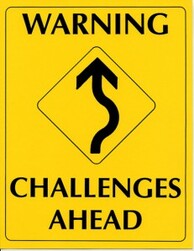
When I awoke from brain surgery, just a little more than a year ago, I knew I would be facing some challenges. At first, I couldn’t walk, I couldn’t use my right, dominant hand, I couldn’t see properly, I couldn’t taste or smell, I couldn’t even hear properly. But I wasn’t too worried. I was just so thankful to still be alive and able to think. I was mostly still me. I knew through hard work I would improve.
I have gotten many of my abilities back, although adapted for my newest normal. I can walk with a walker. My right hand usually cooperates, and I can even play my bass again, although holding a pick is difficult. I had already lost my career after my first stroke, so thankfully I didn’t need to deal with that again. My sense of smell has somewhat returned, although my husband does the sniff test to see if the milk has gone bad. I can taste some foods; I still love hot pickled peppers, but I lost my love for cheese and can no longer stomach any type. (Scroll down to read August’s Mindful Musing “No Cheese, Please”)
But one skill, and privilege I haven’t gotten back, is driving. I haven’t driven a car for over a year. Me, who used to commute over 700 kilometers a week for work. It’s because of my eyes. They have improved immensely but….
Like with so many other things, I manage my vision and compensate to make the best of it. But when the rubber hits the road (yes, pun intended) all my vision problems caused by my brain injury prevent me from getting my driver’s license back. They took my license away while I was still in the hospital last year. To get it back I need to go through a driver retraining program and test from a specialized rehabilitation program for drivers who had their license revoked due to a medical concern.
It's quite a bizarre situation. I have 20/20 vision but yet I can’t see properly. It’s a list of other complications that get in the way. Each condition uses many letters of the alphabet, like Oscillopsia and Binocular Diplopia, but all together challenge my vision.
Part of my amazing healthcare team now includes a neuro-ophthalmologist; it’s quite a title. The one taking care of me could be Mr. Rogers brother. He is so kind and gentle, and an amazing doctor. A neuro-ophthalmologist is a doctor who specializes in complex eye disorders caused by the brain and central nervous system. My eye challenges are due to the location of my brain injury.
Strokes can cause so many changes in a person. Many may be subtle and not recognized by people who do not know the stroke survivor well. Brain injury being an invisible injury is aptly named and I can put on a good act of confidence and independence. Many do not realize the effort it takes for me to see straight, nor do I want them to. I depend on others for many things but not being able to drive is a hard one for me. It’s taken away a key part of my independence. Or has it?
As with so many situations, the only control we have is how we respond to the construction zones of everyday life. I see my wonderful, compassionate eye doctor again in the new year. My eyes have slowly been improving, and I will keep doing my vision exercises.
I have decided to dig into my tenacity and try. I will give the driver retraining my best shot. Luckily, they start in a simulated environment, and I have a vast amount of experience as a driver under my belt, which may help.
Not trying is not an option. I do not know if I will be successful, but I do know that I will give it my best effort. I need to be confident that I am safe. I could not live with the thought of hurting someone, but I can live with knowing I tried my best. Driving may not be in my future. That’s okay, there’s always another way. I have friends, I have family, and I can walk with my walker.
My husband is my usual driver. We’ve joked that if I am not able to return to driving, I will get him a chauffeur’s cap with the name “Chives” on it. I don’t know why but it sounds like a good name for my chauffeur. I’ll probably sit in the front with him though.
You never know what’s around the next corner and your life can change dramatically in an instant. It’s okay, that’s life. There will always be unexpected challenges and maybe even a few life-altering events. Don’t forget - you are in control; in control of how you choose to deal with the detours and roadblocks on the highway of life!
I have gotten many of my abilities back, although adapted for my newest normal. I can walk with a walker. My right hand usually cooperates, and I can even play my bass again, although holding a pick is difficult. I had already lost my career after my first stroke, so thankfully I didn’t need to deal with that again. My sense of smell has somewhat returned, although my husband does the sniff test to see if the milk has gone bad. I can taste some foods; I still love hot pickled peppers, but I lost my love for cheese and can no longer stomach any type. (Scroll down to read August’s Mindful Musing “No Cheese, Please”)
But one skill, and privilege I haven’t gotten back, is driving. I haven’t driven a car for over a year. Me, who used to commute over 700 kilometers a week for work. It’s because of my eyes. They have improved immensely but….
Like with so many other things, I manage my vision and compensate to make the best of it. But when the rubber hits the road (yes, pun intended) all my vision problems caused by my brain injury prevent me from getting my driver’s license back. They took my license away while I was still in the hospital last year. To get it back I need to go through a driver retraining program and test from a specialized rehabilitation program for drivers who had their license revoked due to a medical concern.
It's quite a bizarre situation. I have 20/20 vision but yet I can’t see properly. It’s a list of other complications that get in the way. Each condition uses many letters of the alphabet, like Oscillopsia and Binocular Diplopia, but all together challenge my vision.
Part of my amazing healthcare team now includes a neuro-ophthalmologist; it’s quite a title. The one taking care of me could be Mr. Rogers brother. He is so kind and gentle, and an amazing doctor. A neuro-ophthalmologist is a doctor who specializes in complex eye disorders caused by the brain and central nervous system. My eye challenges are due to the location of my brain injury.
Strokes can cause so many changes in a person. Many may be subtle and not recognized by people who do not know the stroke survivor well. Brain injury being an invisible injury is aptly named and I can put on a good act of confidence and independence. Many do not realize the effort it takes for me to see straight, nor do I want them to. I depend on others for many things but not being able to drive is a hard one for me. It’s taken away a key part of my independence. Or has it?
As with so many situations, the only control we have is how we respond to the construction zones of everyday life. I see my wonderful, compassionate eye doctor again in the new year. My eyes have slowly been improving, and I will keep doing my vision exercises.
I have decided to dig into my tenacity and try. I will give the driver retraining my best shot. Luckily, they start in a simulated environment, and I have a vast amount of experience as a driver under my belt, which may help.
Not trying is not an option. I do not know if I will be successful, but I do know that I will give it my best effort. I need to be confident that I am safe. I could not live with the thought of hurting someone, but I can live with knowing I tried my best. Driving may not be in my future. That’s okay, there’s always another way. I have friends, I have family, and I can walk with my walker.
My husband is my usual driver. We’ve joked that if I am not able to return to driving, I will get him a chauffeur’s cap with the name “Chives” on it. I don’t know why but it sounds like a good name for my chauffeur. I’ll probably sit in the front with him though.
You never know what’s around the next corner and your life can change dramatically in an instant. It’s okay, that’s life. There will always be unexpected challenges and maybe even a few life-altering events. Don’t forget - you are in control; in control of how you choose to deal with the detours and roadblocks on the highway of life!
NO Cheese, Please! August 2022
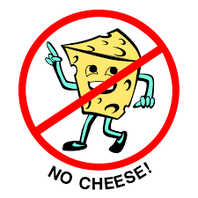
Since my stroke and brain surgery last year I've been adjusting to my newest normal, but there’s been some changes I never anticipated. I have accepted that running, a previous staple in my weekly schedule, may not happen again. But I am so grateful to be able to walk with my walker, instead of being in a wheelchair. Nothing ever gets so bad it can’t get worse! (Scroll down to March 2022 to read my Mindful Musing just about that.) And it’s much better than what it could have been.
The biggest surprise is cheese. Yes, cheese. The day before my brain surgery, my husband made me hot, yummy cheese melts for lunch and my son made a favourite pasta with tomatoes and lots of cheese for supper. We had family nicknames for each other and mine was Mouse for all the cheese I ate.
Cheddar, Mozzarella, Feta, Gouda, Havarti, even a Greek specialty of fried cheese flambeed with Ouzo, called Saganaki. Almost any type of cheese, I ate it, daily. We went though blocks of cheese every week. Several days after brain surgery, cheese had no appeal. At first, I thought it was just the aftereffects of surgery, but no.
As time went on, my reaction to eating cheese grew. My go to for most meals was cheese but now, when I took a bite, my stomach would clench and my whole body would react, telling me in no uncertain terms: Cheese is WRONG! What happened during the surgery? I have no idea, neither does my neurosurgeon. Something changed and I have a complete reaction, emphatically informing my entire being that eating cheese is WRONG!
I can still remember how I loved cheese, just like I remember my love of running. I see commercials or cooking shows, displaying food with hot, melty cheese. Initially I think, yum! I want that. Then my brain registers what it is I’m thinking about and that’s it. No cheese for me. Life is change but this is one change I never, ever expected. I miss cheese.
So, cheese is just another nail in the coffin of what stroke took from me. But this is a resurrection narrative. First and foremost, I’m still here, writing (or complaining) about my changes. For that I am tremendously grateful. Secondly, the changes have steered me in some different directions. Instead of running outside, music blaring in my headphones, concentrating on the next mile, I am walking. I am listening to the birds and sounds of nature. I stop to appreciate flowers or other beautiful parts of nature. I even have the time to take pictures and have discovered a love for photography. And now, new foods.
Previously, my menu was always guided about how much cheese I could have in a meal. Without cheese (and a lack of sense of taste) I have discovered a whole new world of dishes I may not have previously tried. I love spicy Mexican, Middle Eastern and East Indian foods. Recently I tried sushi and discovered how much I love it, especially the pickled ginger. All these foods offer many cheese-less items, filled with spices that I can taste.
Along with all these new flavours, my new diet might be a little healthier too. Instead of an ooey gooey four cheese pizza, I’m enjoying a cheese-less pizza, topped with tomato sauce, loads of sautéed vegetables and a generous dose of hot pickled peppers. (And you can order pizza without the cheese!)
As I’ve said many times before: Life is change. The only thing we have control of is our reaction and subsequent choices to what life throws our way; it’s a constant readjustment to our surroundings. Compared to surviving strokes and brain surgery, not being able to eat cheese is pretty far down the ladder of importance. I may miss it, but I’m adjusting. And I’m choosing to find enjoyment, maybe even adventure, in discovering other foods that are becoming favourites.
And my brain agrees with my new food quests, as long as it stays cheese-less!
The biggest surprise is cheese. Yes, cheese. The day before my brain surgery, my husband made me hot, yummy cheese melts for lunch and my son made a favourite pasta with tomatoes and lots of cheese for supper. We had family nicknames for each other and mine was Mouse for all the cheese I ate.
Cheddar, Mozzarella, Feta, Gouda, Havarti, even a Greek specialty of fried cheese flambeed with Ouzo, called Saganaki. Almost any type of cheese, I ate it, daily. We went though blocks of cheese every week. Several days after brain surgery, cheese had no appeal. At first, I thought it was just the aftereffects of surgery, but no.
As time went on, my reaction to eating cheese grew. My go to for most meals was cheese but now, when I took a bite, my stomach would clench and my whole body would react, telling me in no uncertain terms: Cheese is WRONG! What happened during the surgery? I have no idea, neither does my neurosurgeon. Something changed and I have a complete reaction, emphatically informing my entire being that eating cheese is WRONG!
I can still remember how I loved cheese, just like I remember my love of running. I see commercials or cooking shows, displaying food with hot, melty cheese. Initially I think, yum! I want that. Then my brain registers what it is I’m thinking about and that’s it. No cheese for me. Life is change but this is one change I never, ever expected. I miss cheese.
So, cheese is just another nail in the coffin of what stroke took from me. But this is a resurrection narrative. First and foremost, I’m still here, writing (or complaining) about my changes. For that I am tremendously grateful. Secondly, the changes have steered me in some different directions. Instead of running outside, music blaring in my headphones, concentrating on the next mile, I am walking. I am listening to the birds and sounds of nature. I stop to appreciate flowers or other beautiful parts of nature. I even have the time to take pictures and have discovered a love for photography. And now, new foods.
Previously, my menu was always guided about how much cheese I could have in a meal. Without cheese (and a lack of sense of taste) I have discovered a whole new world of dishes I may not have previously tried. I love spicy Mexican, Middle Eastern and East Indian foods. Recently I tried sushi and discovered how much I love it, especially the pickled ginger. All these foods offer many cheese-less items, filled with spices that I can taste.
Along with all these new flavours, my new diet might be a little healthier too. Instead of an ooey gooey four cheese pizza, I’m enjoying a cheese-less pizza, topped with tomato sauce, loads of sautéed vegetables and a generous dose of hot pickled peppers. (And you can order pizza without the cheese!)
As I’ve said many times before: Life is change. The only thing we have control of is our reaction and subsequent choices to what life throws our way; it’s a constant readjustment to our surroundings. Compared to surviving strokes and brain surgery, not being able to eat cheese is pretty far down the ladder of importance. I may miss it, but I’m adjusting. And I’m choosing to find enjoyment, maybe even adventure, in discovering other foods that are becoming favourites.
And my brain agrees with my new food quests, as long as it stays cheese-less!
My New ALIVE Day! June 2022
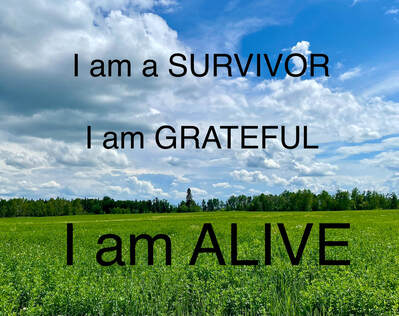
I’m ALIVE!
Every day you wake up to greet a new day is a great ALIVE day. The origin of ALIVE Days is military in nature, for veterans who survive combat, it’s a celebration of their survival and has been adopted by stroke survivors as well. I wrote about ALIVE Days last year on my “strokeversary”, the date I survived my first stroke. I never, ever could have imagined that just a month after I wrote about celebrating the anniversary of surviving my first stroke, I would have another hemorrhagic stroke. It left me with even more challenges and plenty of worry.
To combat the newest stroke, I had brain surgery. I wrote about it in a previous Mindful Musing. (You can scroll down to read: It's Been Awhile, October 2021). It also changed my “strokeversary”. My new ALIVE day is June 29. The day I survived brain surgery and had the malformation removed from my brain! It’s a dual celebration.
I’m not planning a big party or anything, but I will be celebrating that I have a new ALIVE Day. There is so much for me to be thankful for. While I was still in the hospital last summer, I was desperate for some type of release from the emotional chaos of recovery. I couldn’t believe I had survived my stroke and my surgery. And despite various deficits, I could still think.
To help me manage, I needed the cathartic effect of putting my thoughts onto paper, even though I could barely hold a pen. The words needed to be liberated from my brain, so I tried. It took lots of time, and plenty of effort but it was great therapy. I was able to tune out the chaos of hospital life and put pen to paper. After deciphering my scrawls, I’ve decided it will be included in the new memoir I’m writing about my journey, but I want to share it now, with all of you. So much has happened since that first stroke…
Please read my thoughts below:
Phone calls with loved ones, caring, compassionate texts and messages, help from an aide to straighten my blankets. So much kindness. Everyone’s love and care protects and envelopes me; like a warm, soft cloak wrapped around my shoulders, keeping out the worst of the raging winter blizzard. It’s woven with love, strength, prayers, and positive energy. With my cloak of care firmly in place I can heal. I can move forward, do what I need to do and be who I need to be.
People are so kind in their words, so generous in their support and actions. It surrounds me and reaches in, touching my soul. There is no choice. With so much love I can’t help but improve and get better. I must try my hardest, give it my all. One step at a time, to get stronger and gain back my independence just so I have an opportunity to give back to all these amazing people. To have a chance to pay it forward to anyone who needs a smile, a helping hand, a prayer, or a candle lit for them.
It's a choice that’s really not a choice. It’s like a cherished, healthy baby; thriving, loved, well cared for. They don’t make a choice when they start to sit up, roll over, crawl, walk. It’s just the way it is. The natural succession of growing and learning. Some take to it faster than others, but they are milestones achieved by most.
That’s me; it’s just the way it is. Soon I’ll be sitting, then standing, then walking again with my cloak of love and support helping me every step of the way. My success belongs to all who have helped to weave the fabric. I know I am not alone. I am forever grateful. I want to succeed to a place where I can have the honour of being a thread in someone else’s cloak.
Thank you to all who were there for me so I can celebrate my new ALIVE Day and have a chance to give back!
Every day you wake up to greet a new day is a great ALIVE day. The origin of ALIVE Days is military in nature, for veterans who survive combat, it’s a celebration of their survival and has been adopted by stroke survivors as well. I wrote about ALIVE Days last year on my “strokeversary”, the date I survived my first stroke. I never, ever could have imagined that just a month after I wrote about celebrating the anniversary of surviving my first stroke, I would have another hemorrhagic stroke. It left me with even more challenges and plenty of worry.
To combat the newest stroke, I had brain surgery. I wrote about it in a previous Mindful Musing. (You can scroll down to read: It's Been Awhile, October 2021). It also changed my “strokeversary”. My new ALIVE day is June 29. The day I survived brain surgery and had the malformation removed from my brain! It’s a dual celebration.
I’m not planning a big party or anything, but I will be celebrating that I have a new ALIVE Day. There is so much for me to be thankful for. While I was still in the hospital last summer, I was desperate for some type of release from the emotional chaos of recovery. I couldn’t believe I had survived my stroke and my surgery. And despite various deficits, I could still think.
To help me manage, I needed the cathartic effect of putting my thoughts onto paper, even though I could barely hold a pen. The words needed to be liberated from my brain, so I tried. It took lots of time, and plenty of effort but it was great therapy. I was able to tune out the chaos of hospital life and put pen to paper. After deciphering my scrawls, I’ve decided it will be included in the new memoir I’m writing about my journey, but I want to share it now, with all of you. So much has happened since that first stroke…
Please read my thoughts below:
Phone calls with loved ones, caring, compassionate texts and messages, help from an aide to straighten my blankets. So much kindness. Everyone’s love and care protects and envelopes me; like a warm, soft cloak wrapped around my shoulders, keeping out the worst of the raging winter blizzard. It’s woven with love, strength, prayers, and positive energy. With my cloak of care firmly in place I can heal. I can move forward, do what I need to do and be who I need to be.
People are so kind in their words, so generous in their support and actions. It surrounds me and reaches in, touching my soul. There is no choice. With so much love I can’t help but improve and get better. I must try my hardest, give it my all. One step at a time, to get stronger and gain back my independence just so I have an opportunity to give back to all these amazing people. To have a chance to pay it forward to anyone who needs a smile, a helping hand, a prayer, or a candle lit for them.
It's a choice that’s really not a choice. It’s like a cherished, healthy baby; thriving, loved, well cared for. They don’t make a choice when they start to sit up, roll over, crawl, walk. It’s just the way it is. The natural succession of growing and learning. Some take to it faster than others, but they are milestones achieved by most.
That’s me; it’s just the way it is. Soon I’ll be sitting, then standing, then walking again with my cloak of love and support helping me every step of the way. My success belongs to all who have helped to weave the fabric. I know I am not alone. I am forever grateful. I want to succeed to a place where I can have the honour of being a thread in someone else’s cloak.
Thank you to all who were there for me so I can celebrate my new ALIVE Day and have a chance to give back!
Plans Are Made To Be Changed! May 2022
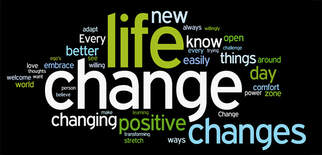
Life is all about change. I have written about this topic several times. My life has had some major, unexpected changes. But that’s life, it’s unpredictable and tomorrow’s plans can suddenly be turned upside down. Just the other week, spring turned into a blizzard, complete with six inches of fresh snow.
I had another recent disruption in what I thought were well laid plans. I am blessed to have two wonderful, older sisters. I know they are always watching out for me and have been there for me, literally, my entire life. I’ve learned a lot of life lessons from these two wonderful siblings of mine. I shared some wisdom from my middle sister in a previous newsletter, on visualization. (scroll down to January to read it)
My eldest sister will soon be celebrating a milestone birthday. My goal was to be there in person, to help her rejoice the gift of another year. My eldest sister has a passion for life. She is ready to laugh, try anything new, and join in any suggested adventure. Logistics that would bog down most people do not bother her. She always has faith that it will work out. I get tired just thinking about all she tries to fit into one day. She lives her life to the fullest, just as she wants to.
With her smile and ability to laugh at anything, including herself, some people have described her as a breath of fresh air. She is always sending me messages that are inspirational or provide a good chuckle. Ten years ago, I had the opportunity to be at another milestone birthday of hers. I was a very different person back then. It was no problem to work fulltime, hop on a plane for the weekend (did I mention she lives over 3,000 kilometers away) and be back at work on Monday.
Things have changed for me, more significantly since my latest stroke last June. With memories of my old self and trying to manage my new normal, my husband and I started planning to be there for this birthday. There seemed to be multiple roadblocks popping up. We tried to mitigate each one, thinking we could make it work. Was the universe trying to tell me something? I wasn’t listening.
I was pushing myself, determined to be there for the birthday celebration. Then I got sick. Stroke already presents me with enough challenges daily that anything extra really brings me down. I was struggling with my health. My mom suggested I needed a wheelchair at the airport, not just my walker.
The universe kept sending signs that maybe this wasn’t a good idea. Less than a year ago I had undergone major brain surgery. I was still being monitored by my neurosurgeon. I can’t even stand to have my shower. Suddenly, the signs became clear, and I finally read them. I was rushing things.
Life is unpredictable. Plans are developed only to be altered. Nothing is so uncertain as a dead sure thing, or so the saying goes. I wanted to be part of the festivity, to be there with all my family. But I needed to temper that with common sense and respect to my own health. I will be there, just not on the expected date. We will celebrate, another time.
Stroke has taught me many things but learning to go with the flow and listen to what my body is telling me is paramount. Even now I sometimes get confused between my old self and my new normal, thinking I can still do the things I use to. Telling myself I needed to be at the party and there for my sister is a prime example.
Luckily, I recognized my reality before I pushed myself too far. Even my sister was starting to have some concerns. I may have been worried about delaying my visit, but she immediately quelled my qualms, blowing away my doubts over disappointing her.
When the time is right, I will be there. We are all learning that plans are made to be changed. As one of my old co-workers always said, “Just go with the flow.” I am grateful that I was even able to consider going. Recovery is a slow a process, so is getting use to my new normal. By being flexible I can enjoy life to the fullest of my new abilities. With having sisters that understand my new normal, often better than I do, I can truly embrace the new me!
I had another recent disruption in what I thought were well laid plans. I am blessed to have two wonderful, older sisters. I know they are always watching out for me and have been there for me, literally, my entire life. I’ve learned a lot of life lessons from these two wonderful siblings of mine. I shared some wisdom from my middle sister in a previous newsletter, on visualization. (scroll down to January to read it)
My eldest sister will soon be celebrating a milestone birthday. My goal was to be there in person, to help her rejoice the gift of another year. My eldest sister has a passion for life. She is ready to laugh, try anything new, and join in any suggested adventure. Logistics that would bog down most people do not bother her. She always has faith that it will work out. I get tired just thinking about all she tries to fit into one day. She lives her life to the fullest, just as she wants to.
With her smile and ability to laugh at anything, including herself, some people have described her as a breath of fresh air. She is always sending me messages that are inspirational or provide a good chuckle. Ten years ago, I had the opportunity to be at another milestone birthday of hers. I was a very different person back then. It was no problem to work fulltime, hop on a plane for the weekend (did I mention she lives over 3,000 kilometers away) and be back at work on Monday.
Things have changed for me, more significantly since my latest stroke last June. With memories of my old self and trying to manage my new normal, my husband and I started planning to be there for this birthday. There seemed to be multiple roadblocks popping up. We tried to mitigate each one, thinking we could make it work. Was the universe trying to tell me something? I wasn’t listening.
I was pushing myself, determined to be there for the birthday celebration. Then I got sick. Stroke already presents me with enough challenges daily that anything extra really brings me down. I was struggling with my health. My mom suggested I needed a wheelchair at the airport, not just my walker.
The universe kept sending signs that maybe this wasn’t a good idea. Less than a year ago I had undergone major brain surgery. I was still being monitored by my neurosurgeon. I can’t even stand to have my shower. Suddenly, the signs became clear, and I finally read them. I was rushing things.
Life is unpredictable. Plans are developed only to be altered. Nothing is so uncertain as a dead sure thing, or so the saying goes. I wanted to be part of the festivity, to be there with all my family. But I needed to temper that with common sense and respect to my own health. I will be there, just not on the expected date. We will celebrate, another time.
Stroke has taught me many things but learning to go with the flow and listen to what my body is telling me is paramount. Even now I sometimes get confused between my old self and my new normal, thinking I can still do the things I use to. Telling myself I needed to be at the party and there for my sister is a prime example.
Luckily, I recognized my reality before I pushed myself too far. Even my sister was starting to have some concerns. I may have been worried about delaying my visit, but she immediately quelled my qualms, blowing away my doubts over disappointing her.
When the time is right, I will be there. We are all learning that plans are made to be changed. As one of my old co-workers always said, “Just go with the flow.” I am grateful that I was even able to consider going. Recovery is a slow a process, so is getting use to my new normal. By being flexible I can enjoy life to the fullest of my new abilities. With having sisters that understand my new normal, often better than I do, I can truly embrace the new me!
Nothing Ever Gets So Bad... March 2022
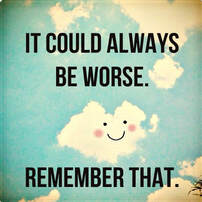
Nothing ever gets so bad it can’t get worse. This statement seems to be the epitome of a pessimist’s personality. True? Maybe not.
I must admit, my mother is the one who introduced me to this idiom. Yes, my mother. Initially, I thought she must be the president of the naysayer’s club but then something interesting happened. I took the time to think about it. It was while I was in the hospital, after brain surgery. I recalled my mother’s saying and that’s when it hit me.
Things were bad but they could have been much worse. I was actually really lucky. Sure, I was going through some pretty tough and scary times but, I was alive. I could think, I could talk, and I had amazing people, giving me unending love and support. Some of my fellow patients were not so lucky.
When I was at, what I thought my worst, I looked around at all the things happening in the hospital and realized I was surrounded by so much good fortune; from my caring nurses to the expertise of my surgeon, and all the wonderful people sending prayers for my recovery. In examining this seemingly negative, cynical phrase I discovered a statement full of hope and gratitude.
Let me explain: We all have bad days and bad luck. When things seem to be going against you, recall this phrase. A peculiar thing starts to happen. You start to feel grateful that it’s not worse. By embracing your misfortune, you can take a step forward toward better times. You realize it hasn’t gotten that bad, if it had, things couldn’t get worse. If things can get worse, they’re not that bad. It’s a loop that directs your thoughts back to a place where you can manage your problems.
I finally recognize the wisdom in my mother’s assertion. She led me down the path of my own self-discovery to accept the bad that happens and appreciate that it’s not worse. It’s a starting point to make my life better and find my own happiness. It helps me to take charge of my “bad” situation and make it better. I know I’m not starting at the bottom because it could have been worse. I’m already on the staircase of recovery.
It's amazing how a little reflection can bring about so much insight. What I had thought was a simple pessimistic statement has ended up being one of my favourite sayings, filling my days with promise and appreciation. It turns out mother really does know best.
Thank you, Mom.
I must admit, my mother is the one who introduced me to this idiom. Yes, my mother. Initially, I thought she must be the president of the naysayer’s club but then something interesting happened. I took the time to think about it. It was while I was in the hospital, after brain surgery. I recalled my mother’s saying and that’s when it hit me.
Things were bad but they could have been much worse. I was actually really lucky. Sure, I was going through some pretty tough and scary times but, I was alive. I could think, I could talk, and I had amazing people, giving me unending love and support. Some of my fellow patients were not so lucky.
When I was at, what I thought my worst, I looked around at all the things happening in the hospital and realized I was surrounded by so much good fortune; from my caring nurses to the expertise of my surgeon, and all the wonderful people sending prayers for my recovery. In examining this seemingly negative, cynical phrase I discovered a statement full of hope and gratitude.
Let me explain: We all have bad days and bad luck. When things seem to be going against you, recall this phrase. A peculiar thing starts to happen. You start to feel grateful that it’s not worse. By embracing your misfortune, you can take a step forward toward better times. You realize it hasn’t gotten that bad, if it had, things couldn’t get worse. If things can get worse, they’re not that bad. It’s a loop that directs your thoughts back to a place where you can manage your problems.
I finally recognize the wisdom in my mother’s assertion. She led me down the path of my own self-discovery to accept the bad that happens and appreciate that it’s not worse. It’s a starting point to make my life better and find my own happiness. It helps me to take charge of my “bad” situation and make it better. I know I’m not starting at the bottom because it could have been worse. I’m already on the staircase of recovery.
It's amazing how a little reflection can bring about so much insight. What I had thought was a simple pessimistic statement has ended up being one of my favourite sayings, filling my days with promise and appreciation. It turns out mother really does know best.
Thank you, Mom.
The Power of Visualizing: January 2022
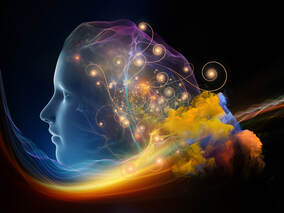
As promised, here are my thoughts on a technique I recently learned. This technique really helped me get through my stroke, brain surgery and recovery in the hospital. I still use it today, in many aspects of my life. Facing brain surgery was one of the scariest moments of my life. It was offered as a choice but really it wasn’t. If I wanted to improve my health and lower my risk of another, potentially worse hemorrhagic stroke, I had to have it.
To help make this monumental decision my husband, Ken, and I talked with one of my sisters. We had already talked at length with the neurosurgeon, getting all the necessary information. My sister was a nurse practitioner and had worked specifically in neurology and stroke. After sharing the information, she let us in on a technique that helped us immensely.
VISUALIZATION
Visualization is a method of looking ahead into your future and visualizing your desired outcome. It helps to create your dream and then pursue it with confidence. It is a technique that has been used successfully by athletes, entrepreneurs, and me, someone wanting to survive and recover from stroke and brain surgery.
My sister first explained, in more detail, the medical side of the operation. Then she went on to impart her wise words; “don’t focus on the operation or being in ICU. Focus on what your life will be like in 3 months. Think about life with the malformation gone. Think about living with reduced risk of another stroke. Focus on the good things and the good things will come.”
I started thinking about life after the surgery. I started thinking about how I wanted it to look and what I wanted to do. It gave me the strength to face the surgery head on. I knew it would be difficult but by looking ahead to when it would be better, it was better. It was a powerful tool to manage those first few days when every minute hurt.
Soon after my surgery it was discovered that I wasn’t able to walk. By visualizing my future in three months, I knew I’d be okay. I wouldn’t even contemplate the thought of not being able to walk again. Instead, I saw myself walking and started breaking down my future dream into small, manageable goals. And I knew I didn’t have to do it alone. With my husband, the doctors, and therapists I slowly moved ahead, literally one step at a time.
Together we celebrated each small success, from learning how to maneuver my own wheelchair to being able to stand again. Visualization let me see my dreams for recovery, laced with hope and hard work. The dream gave me the tools to set achievable goals. With visualizing where I wanted to be I never once lamented over where I was or what I couldn’t do. It was only a matter of time, persistence and “Never Give Up” attitude.
Visualization activated my subconscious, making it easier to set goals and recognize what I needed, step by step. By visualizing my dream, I attracted the people and resources required to achieve my goals. Lastly, it built and sustained my motivation. I was going to walk again, no question!
And I am, my dream achieved. I still use a walker or hiking poles, but I’m walking. Dreams sometimes need to be adjusted. Ultimately, I would like to walk independently but I’m thrilled with where I’m at. Recently I took our dog, Arthur, for a walk by myself. Just me, my walker and Arthur. I’m a survivor!
My future is filled with hope for better things to come. By visualizing what I want, my recovery will never stop. Most importantly, I can continue to give back and try to help others. Visualization is so valuable in helping our dreams come true, whether in everyday life or facing life altering events. What does your future look like?
To help make this monumental decision my husband, Ken, and I talked with one of my sisters. We had already talked at length with the neurosurgeon, getting all the necessary information. My sister was a nurse practitioner and had worked specifically in neurology and stroke. After sharing the information, she let us in on a technique that helped us immensely.
VISUALIZATION
Visualization is a method of looking ahead into your future and visualizing your desired outcome. It helps to create your dream and then pursue it with confidence. It is a technique that has been used successfully by athletes, entrepreneurs, and me, someone wanting to survive and recover from stroke and brain surgery.
My sister first explained, in more detail, the medical side of the operation. Then she went on to impart her wise words; “don’t focus on the operation or being in ICU. Focus on what your life will be like in 3 months. Think about life with the malformation gone. Think about living with reduced risk of another stroke. Focus on the good things and the good things will come.”
I started thinking about life after the surgery. I started thinking about how I wanted it to look and what I wanted to do. It gave me the strength to face the surgery head on. I knew it would be difficult but by looking ahead to when it would be better, it was better. It was a powerful tool to manage those first few days when every minute hurt.
Soon after my surgery it was discovered that I wasn’t able to walk. By visualizing my future in three months, I knew I’d be okay. I wouldn’t even contemplate the thought of not being able to walk again. Instead, I saw myself walking and started breaking down my future dream into small, manageable goals. And I knew I didn’t have to do it alone. With my husband, the doctors, and therapists I slowly moved ahead, literally one step at a time.
Together we celebrated each small success, from learning how to maneuver my own wheelchair to being able to stand again. Visualization let me see my dreams for recovery, laced with hope and hard work. The dream gave me the tools to set achievable goals. With visualizing where I wanted to be I never once lamented over where I was or what I couldn’t do. It was only a matter of time, persistence and “Never Give Up” attitude.
Visualization activated my subconscious, making it easier to set goals and recognize what I needed, step by step. By visualizing my dream, I attracted the people and resources required to achieve my goals. Lastly, it built and sustained my motivation. I was going to walk again, no question!
And I am, my dream achieved. I still use a walker or hiking poles, but I’m walking. Dreams sometimes need to be adjusted. Ultimately, I would like to walk independently but I’m thrilled with where I’m at. Recently I took our dog, Arthur, for a walk by myself. Just me, my walker and Arthur. I’m a survivor!
My future is filled with hope for better things to come. By visualizing what I want, my recovery will never stop. Most importantly, I can continue to give back and try to help others. Visualization is so valuable in helping our dreams come true, whether in everyday life or facing life altering events. What does your future look like?
Let's Skip the Traditions: December 2021
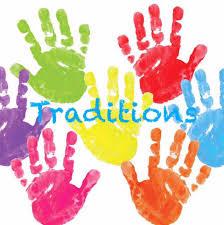
Christmas; a time for traditions and family gatherings. There’s a comfort in the same old songs, decorations, even food, with recipes handed down from generations. But life is change. We can’t remain static. Sometimes, with substantial change, those time-honoured traditions are just too difficult.
That’s how I am feeling about this Christmas. I was creating a lot of stress for myself, trying to make a traditional Christmas work for everyone I care about. I am still recovering from another stroke and brain surgery, mixed in with worry for others. My self-made stress was exacerbating my symptoms and impeding my healing. Then, when I felt like I was just about to fall off the edge, I had an epiphany, (with wise words from both my sisters).
Christmas is just a date. It’s the feelings, the love, how you treat others – how you treat yourself, that truly matters. If things need to be different, that’s okay. No one is judging me. The people who care about me know my challenges and want to help. I need to let go of my own expectations of how I think it should be.
I was caught in a trap of my own design, but one I am all too familiar with; my deep-seated practice of taking on too much. You’d think by now I would have learned. But old habits die hard, and they keep whispering in my ear, “You’re the only one who can do it all.” I have improved, a lot in fact, but Mephistopheles still sits on my shoulder, tempting me to feel responsible for everyone and everything.
Through experience, surviving 3 strokes and brain surgery, I am altering my behaviour. Christmas is looking different this year. The actual date, celebrating the birth of Christ, is up for debate. If historians and scholars cannot say with alacrity what day Jesus was born, why do I have to adhere to a certain date? The answer is, I don’t.
To manage my own health and recovery, my family’s needs, and an ongoing pandemic, we’re doing things different. I’m embracing the change. It’s almost like a breath of fresh air, letting go of all the expected practices. I haven’t forgotten them, and may do them once again, we’ll see. So much in my life has changed, holding onto past expectations is too hard. Love, kindness, and an abundance of gratitude, that’s what counts. It’s not what type of food, the same decorations or even the songs, it’s our behaviour; how we treat each other, and ourselves.
I’m not lacking Christmas spirit. The opposite is true. I want that Christmas spirit all year long, not just one or two days, without the need for keeping up traditions. I’ve been granted yet another chance of life. Maybe that’s spilling over, turning the usual into something new. Or maybe all that other stuff is just noise and I want to focus on what really matters.
I’m learning that it’s alright to let go of the past as I get used to my newest normal. Every day is important, tomorrow is not promised. I’m not letting the pressure of keeping up traditions take away from spending time with the people I love. It’s like the Who’s in Whoville. The Grinch took away all their usual Christmas celebrations, but it didn’t change the Who’s feelings for the season. To quote the book, “Christmas will always be just as long as we have, we.”
I’m so thankful for everyone who make me a “we”. This is just one more lesson I have learned, and wanted to share, while riding the roller coaster of life. Christmas doesn’t come in a box, nor is it about the traditions. Every day we can “Welcome Christmas - While we stand heart to heart and hand in hand.”
That’s how I am feeling about this Christmas. I was creating a lot of stress for myself, trying to make a traditional Christmas work for everyone I care about. I am still recovering from another stroke and brain surgery, mixed in with worry for others. My self-made stress was exacerbating my symptoms and impeding my healing. Then, when I felt like I was just about to fall off the edge, I had an epiphany, (with wise words from both my sisters).
Christmas is just a date. It’s the feelings, the love, how you treat others – how you treat yourself, that truly matters. If things need to be different, that’s okay. No one is judging me. The people who care about me know my challenges and want to help. I need to let go of my own expectations of how I think it should be.
I was caught in a trap of my own design, but one I am all too familiar with; my deep-seated practice of taking on too much. You’d think by now I would have learned. But old habits die hard, and they keep whispering in my ear, “You’re the only one who can do it all.” I have improved, a lot in fact, but Mephistopheles still sits on my shoulder, tempting me to feel responsible for everyone and everything.
Through experience, surviving 3 strokes and brain surgery, I am altering my behaviour. Christmas is looking different this year. The actual date, celebrating the birth of Christ, is up for debate. If historians and scholars cannot say with alacrity what day Jesus was born, why do I have to adhere to a certain date? The answer is, I don’t.
To manage my own health and recovery, my family’s needs, and an ongoing pandemic, we’re doing things different. I’m embracing the change. It’s almost like a breath of fresh air, letting go of all the expected practices. I haven’t forgotten them, and may do them once again, we’ll see. So much in my life has changed, holding onto past expectations is too hard. Love, kindness, and an abundance of gratitude, that’s what counts. It’s not what type of food, the same decorations or even the songs, it’s our behaviour; how we treat each other, and ourselves.
I’m not lacking Christmas spirit. The opposite is true. I want that Christmas spirit all year long, not just one or two days, without the need for keeping up traditions. I’ve been granted yet another chance of life. Maybe that’s spilling over, turning the usual into something new. Or maybe all that other stuff is just noise and I want to focus on what really matters.
I’m learning that it’s alright to let go of the past as I get used to my newest normal. Every day is important, tomorrow is not promised. I’m not letting the pressure of keeping up traditions take away from spending time with the people I love. It’s like the Who’s in Whoville. The Grinch took away all their usual Christmas celebrations, but it didn’t change the Who’s feelings for the season. To quote the book, “Christmas will always be just as long as we have, we.”
I’m so thankful for everyone who make me a “we”. This is just one more lesson I have learned, and wanted to share, while riding the roller coaster of life. Christmas doesn’t come in a box, nor is it about the traditions. Every day we can “Welcome Christmas - While we stand heart to heart and hand in hand.”
Its been awhile: October 2021

Greetings 7 Jars Friends! I’ve missed you all, I haven’t written a newsletter since May. I have so much to share, my rollercoaster life having a few loops de loop of late. I was just getting ready to write June’s newsletter when stroke struck again!
Yes, I had another bleed, causing another stroke. There was no clear reason why, it just did. Another adage I’ve often used, sometimes bad things happen to good people. The bleed was significant but as in the past, it was in an area considered inoperable. I had returned to the starting line of recovery instead of the comfortable middle of the marathon where I had been just the previous week.
Neither Ken, my husband, nor I really comprehended the seriousness of this newest stroke. Unfortunately, it was familiar territory. It was bad, to be sure, but manageable – been there, done that. But then we spoke with my neurosurgeon. This bleed was bigger than the one that had caused my first stroke. Luckily it had bled mostly into my fourth ventricle, a cerebral spinal filled cavity within the brain. If the blood had gone elsewhere…the doctor let those words hang.
We were dumbfounded. But wait! There was a gift within this calamity. The bigger bleed had pushed the cavernous malformation out a little. The doctor now felt it could be reached and removed successfully through surgery. The opportunity in the challenge, as I am so fond of saying. The threat was now turned on its head with leaving it being riskier than the surgery.
Having surgery was disguised as a choice, but it really wasn’t. It’s like a woman in labour suddenly deciding she’s not ready to give birth. We think we are in control but as with so many things in life, we are not; we’re only in control of our response. With the love and support of those close to me, I responded the only way I could, with hope for a better future. I could not live with the risk anymore. I had to take down the sword hanging over my head, now by only a wispy strand of thread. Surgery it was – in FIVE days!
The preparation for surgery was overwhelming but thankfully I had the support of my family, friends and doctors. Together we navigated through physical exams, blood work, consent forms, and numerous phone calls. I could not imagine managing this on my own. The support that everyone freely gave wrapped me in cloak of comfort and care, a treasure beyond measure.
As you may have guessed the surgery was a success. There are still many miles on the road of recovery, but I am grateful to be continuing my journey, managing each detour while ensuring I have plenty of rest stops. My family and friends continue to surround me with kindness, their support endless even after so long. I owe it to each one of them to continue giving it my best during my healing in hopes that one day I can be part of someone else’s cloak in their time of need.
Yes, I had another bleed, causing another stroke. There was no clear reason why, it just did. Another adage I’ve often used, sometimes bad things happen to good people. The bleed was significant but as in the past, it was in an area considered inoperable. I had returned to the starting line of recovery instead of the comfortable middle of the marathon where I had been just the previous week.
Neither Ken, my husband, nor I really comprehended the seriousness of this newest stroke. Unfortunately, it was familiar territory. It was bad, to be sure, but manageable – been there, done that. But then we spoke with my neurosurgeon. This bleed was bigger than the one that had caused my first stroke. Luckily it had bled mostly into my fourth ventricle, a cerebral spinal filled cavity within the brain. If the blood had gone elsewhere…the doctor let those words hang.
We were dumbfounded. But wait! There was a gift within this calamity. The bigger bleed had pushed the cavernous malformation out a little. The doctor now felt it could be reached and removed successfully through surgery. The opportunity in the challenge, as I am so fond of saying. The threat was now turned on its head with leaving it being riskier than the surgery.
Having surgery was disguised as a choice, but it really wasn’t. It’s like a woman in labour suddenly deciding she’s not ready to give birth. We think we are in control but as with so many things in life, we are not; we’re only in control of our response. With the love and support of those close to me, I responded the only way I could, with hope for a better future. I could not live with the risk anymore. I had to take down the sword hanging over my head, now by only a wispy strand of thread. Surgery it was – in FIVE days!
The preparation for surgery was overwhelming but thankfully I had the support of my family, friends and doctors. Together we navigated through physical exams, blood work, consent forms, and numerous phone calls. I could not imagine managing this on my own. The support that everyone freely gave wrapped me in cloak of comfort and care, a treasure beyond measure.
As you may have guessed the surgery was a success. There are still many miles on the road of recovery, but I am grateful to be continuing my journey, managing each detour while ensuring I have plenty of rest stops. My family and friends continue to surround me with kindness, their support endless even after so long. I owe it to each one of them to continue giving it my best during my healing in hopes that one day I can be part of someone else’s cloak in their time of need.
|
In my next Mindful Musing, I will share a little more about some of the support and good advice I received in making the monumental decision and how it helped me through the days after surgery and during rehabilitation.
|





